Pima air museum and American airpower museum: a pair of Lockheed Sr-71A and another Lockheed GTD-21B
I immediately warn you about the order of 130 photos and it’s more like a walk around.
Since I have already talked about it, then there will be information about a specific aircraft and a description of pictures. The first plane was also in the room. This is Pima Air Museum ....
Immediately begin with zaklepochek, maybe here it was completely impossible to consider it completely. Our board with serial number 61-7951 is the second Sr-71 built and the oldest surviving board.
Main rack niche
Separately exhibited a Pratt & Whitney J58-P4 turbo-jet engine
Our aircraft rolled out after the assembly of 20 on October 1964 of the year and made its first flight of 5 in March of 1965 of the year.
It was used to test all systems and flew mainly from Palmdale California.
In 1971, the aircraft was handed over to NASA to replace the YF-12, which was lost in the crash.
In order to hide the use of this aircraft by NASA, it received the designation YF-12C and the serial number 60-6937.
The comic situation was that this serial number belonged to one of the most secret aircraft of the CIA, A-12.
In October, 1978, the aircraft was returned to the Air Force and returned to its original number.
And just two months later, the plane was deposited at Palmdale.
And after all the Sr-71 were written off from the Air Force, it became possible to put it in the museum under the number 61-7951.
inscriptions
Attempt to see it entirely
Cabin
Lockheed GTD-21B is right there. The creation of an unmanned reconnaissance aircraft was a response of the CIA to the defeat of a U-2 rocket over Sverdlovsk and the subsequent promise of US President Eisenhower not to conduct more manned reconnaissance flights over the territory of the USSR. Lockheed's proposal to use the Starfish unmanned version - QF-104 with A-12 has not received support.
Work on the creation of a new reconnaissance UAV - Tagboard program - started on the instructions of the CIA 10 in October 1962. Initially, it was called Q-12, but then received the name D-21 (from Daughter - daughter). Separate reconnaissance equipment section
“Daughter” was designed by the same team of “skunks”: by and large - the UAV is derived from A-12. "Disposable" unmanned aircraft made entirely of titanium.
He was able to reach speeds of more than M = 3,6 at an altitude of more than 30 km and a distance of more than 2000 kilometers. Due to the cleaner aerodynamic shapes and smaller geometrical dimensions, the D-21 had a reduced effective dispersion surface and higher aerodynamic quality compared to the progenitor.
It was intended for high-altitude reconnaissance flights in hostile airspace and dumping a container with a film at the end of the flight. D-21 rescue and reuse was not intended.
A detachable container with reconnaissance equipment weighing about 192 kg was installed at the bottom of the fuselage in front of the bend line of the wing. D-21 was painted with the same ferrite-based black paint as the SR-71. This was done to dissipate heat from the surface of the aircraft, as well as reduce the radar visibility of the aircraft.
Tests of experimental LA X-7A, equipped with a ramjet engine, confirmed the possibility of abandoning expensive J-58 TRDF in favor of ramjet company Marquardt (San Fernando Valley). It was based on the RJ43-MA-11 engine used on the Bomarc IM-99B SAMs. To use it on a high-altitude reconnaissance aircraft at low pressures and high temperatures, the cruising speed and altitude of the engine were significantly increased, and it was possible to restart it (using triethylborane). Duration of the engine XRJ-MA20S-4 increased to 1,5 h.
Already 7 December 1962 was made layout D-21 and transferred to the landfill to determine the EPR.
To launch the D-21A, 12 carriers (2 and 06940) were specially built on the basis of the A-06941, which received the designation M-21 and the nickname "Mother Goose". The D-21A was mounted on a pylon above the tail section of the M-21. In flight before launch, the air intake and nozzle of the D-21A engine were covered with fairings. The reconnaissance department took place after the carrier aircraft had accelerated to a speed of M = 3,2, sufficient for the normal operation of the straight-through. Managed the flight drone by radio channel the second member of the crew.
The first flight of the M-21 was performed on 1 on April 1964. 22 December 1964 was the first flight from the D-21, and 5 March 1966 was the first launch of the D-21A, which flew 150 miles (278 km). During the fourth launch of D-21 (504) 30 in July 1966 in the area of Midway, he was “caught” by the shock wave from M-21 06941 and hit the carrier. Lockheed test pilot Bill Park and the “launch management officer” Ray Torrick ejected, but during the ejection, his high-altitude compensating suit was damaged, and after splashing in the open ocean, he immediately drew water.
Due to the loss of both aircraft, the flights of the remaining M-21 were no longer made.
But C. Johnson was convinced of the high performance of the D-21 and soon released a modification of the D-21B with a rocket booster, launched with the B-52H. Our unit never flew. It was deposited in the 1976 year and was placed in the museum in the 1993 year.
And we again consider our Sr-71
There is also a suit of the pilot of this aircraft.
General view of the pilot in the ejection seat.
Immediately there is a layout of the nose of the aircraft with the skin replaced with fiberglass
It's the same
On the other hand
Nasal rack, look into the niche
Niche, part closer to the nose
The part is closer to the feed
Actually nasal rack
Lower part view towards the nose
Main rack niche
Main Rack Wheel
Cabin
Photo 43.
Right motor
Photo 45.
The J58 engine was developed by the Pratt & Whitney Aircraft Division of the United Aircraft Corporation in the early 50s for the United States Navy. It has been designed to operate at high speeds (M-number 3,0 and above) and at high altitudes (over 80000 feet). The J58 was the first engine capable of operating normally in afterburner mode for a long time and it was the first engine tested in flight at M 3 speed in the Air Force.
A feature of the J58 engine is that it is both a turbojet and a straight-through jet engine.
Since the engine operates in an environment of elevated temperatures, it uses low-volatile JP-7 kerosene, which requires a chemical injection system.
Photo 48.
Photo 53.
Engine nozzle
We look inside
Photo 49.
Main Stand
visible to what extent the wheels are erased
Photo 56.
Now go to the plane, which is set up on the street parking in the American airpower museum. 61-7959 SR-71A, next to Eglin AFB, FL ("Big-Tail" version, with additional sensors and cameras).
The aircraft was rolled out after assembly as Sr-71A 16 August 1965 of the year. But in fact it was used as a test board for testing sensors, for which he received an elongated 9 foot tail in the 1975 year.
Tests showed that with such an add-on the plane almost did not change its behavior, but the new sensors did not show a serious positive change, so this refinement did not go into series.
The program was closed and the plane made its last flight on October 29 1976 of the year.
Therefore, we turn to looking at the aircraft. Fortunately he is in the sun and you can see everything is fine.
view of the rack
Front view
Lantern
Photo 66.
Different elements are sharp, it did not work all at once
Engine nacelle J58
Here you can see all the rivets.
Photo 70.
Photo 71.
right engine
Photo 73.
general view on the right
the same tail extended to 9 feet
From this perspective, unfortunately the pillar
There is no fence between the road and the airplanes on the static. They can be viewed when the museum is closed.
Glasses are not covered in Pima.
Photo 79.
Photo 80.
back view
Engine air intake
Photo 83.
Photo 84.
Photo 86.
Then all sorts of perversions go on: remove from here to here and so on.
Photo 89.
LDPE is big, the plane is small
The plane is big, LDPE is small
Photo 92.
right view
Empennage
Photo 95.
Photo 96.
Photo 97.
Rear view
general rear view
Photo 100.
Photo 101.
Photo 103.
Photo 104.
general view from the left
Photo 106.
Bottom part
all sorts of inscriptions are useful and not very
Main stand cleaning niche
more inscriptions
the wheel of the main rack, the manufacturer is visible
powerful stand itself
Photo 113.
Photo 114.
under the plane
so stand looks in full face
attempt to look into the air intake
Photo 118.
Photo 119.
Photo 120.
Photo 121.
Photo 122.
Photo 123.
niche bow stand
Photo 125.
here, too, all sorts of inscriptions
and what tires are not white here? :-)))
That's the name of the pilot why here
inscriptions
under the cabin all sorts of inscriptions and incomprehensible ledge
In total, the 32 boards were released and at the moment they are all written off and the 30 side order can be seen in US museums and one in England.
Flight performance
Crew: 2 person
Length: 32,74 m
Wingspan: 16,94 m
Height: 5,64 m
Wing area: 141,1 m²
Empty weight: 27215 kg
Maximum takeoff weight: 77100 kg
Payload mass (equipment): kg 1600
Weight Fuel: 46180 kg
Engine type: Turbopramotny engine
Model: Pratt & Whitney J58-P4
Maximum thrust: 2 x 10630 kgf
Afterburner: 2 x 14460 kgf
Engine weight: 3200 kg
Maximum permissible speed: M = 3,2 (at a bow temperature <427 °, acceleration to M = 3,3 is allowed)
Supersonic cruising speed: M = 2,8
Range of flight: 5230 km
Range: 2000 km
Flight duration: 1,5 h
Practical ceiling: 25910 m (85000 ft)
Rate of climb: m / s 60
Takeoff / Run Length: 1830 m
Wing loading: 546 kg / m²
Thrust-to-weight ratio: 0,36
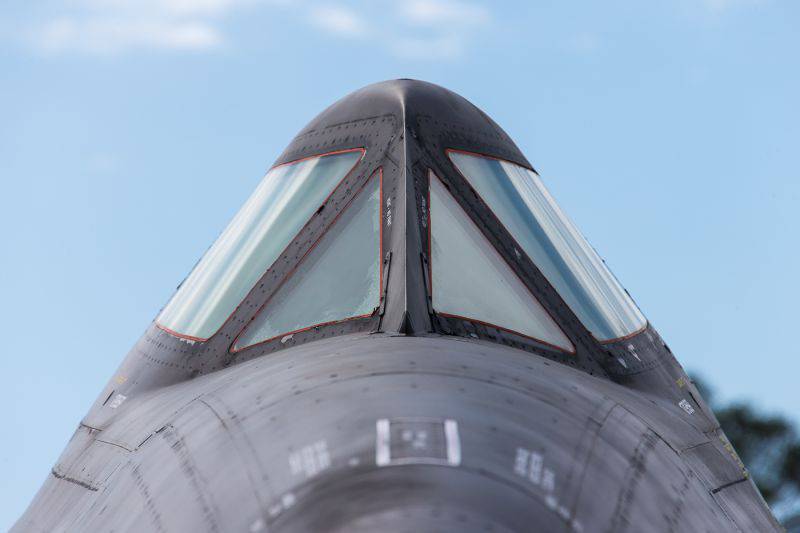
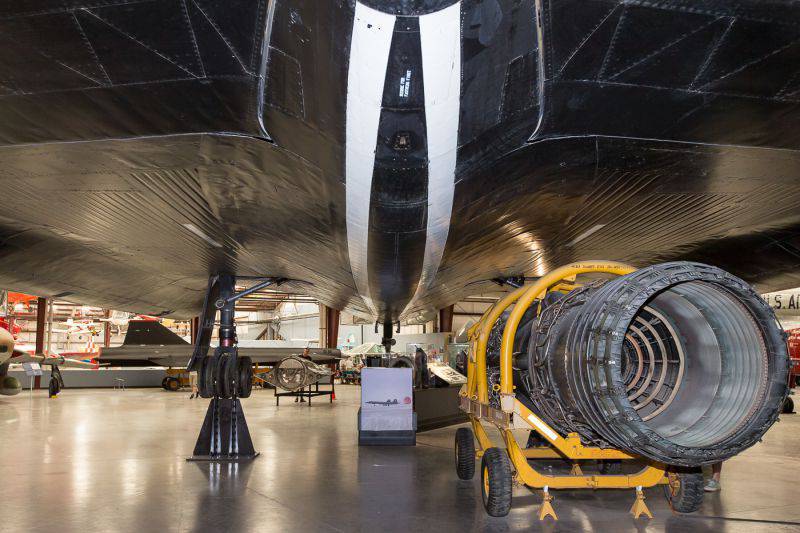
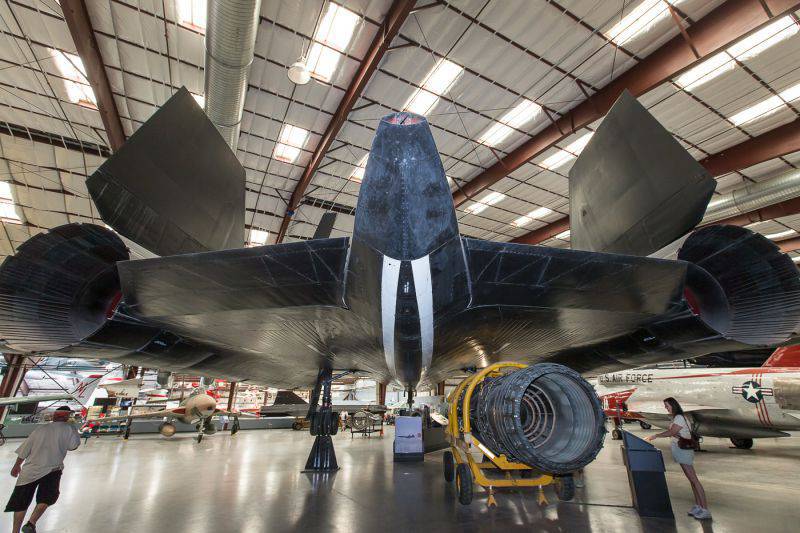
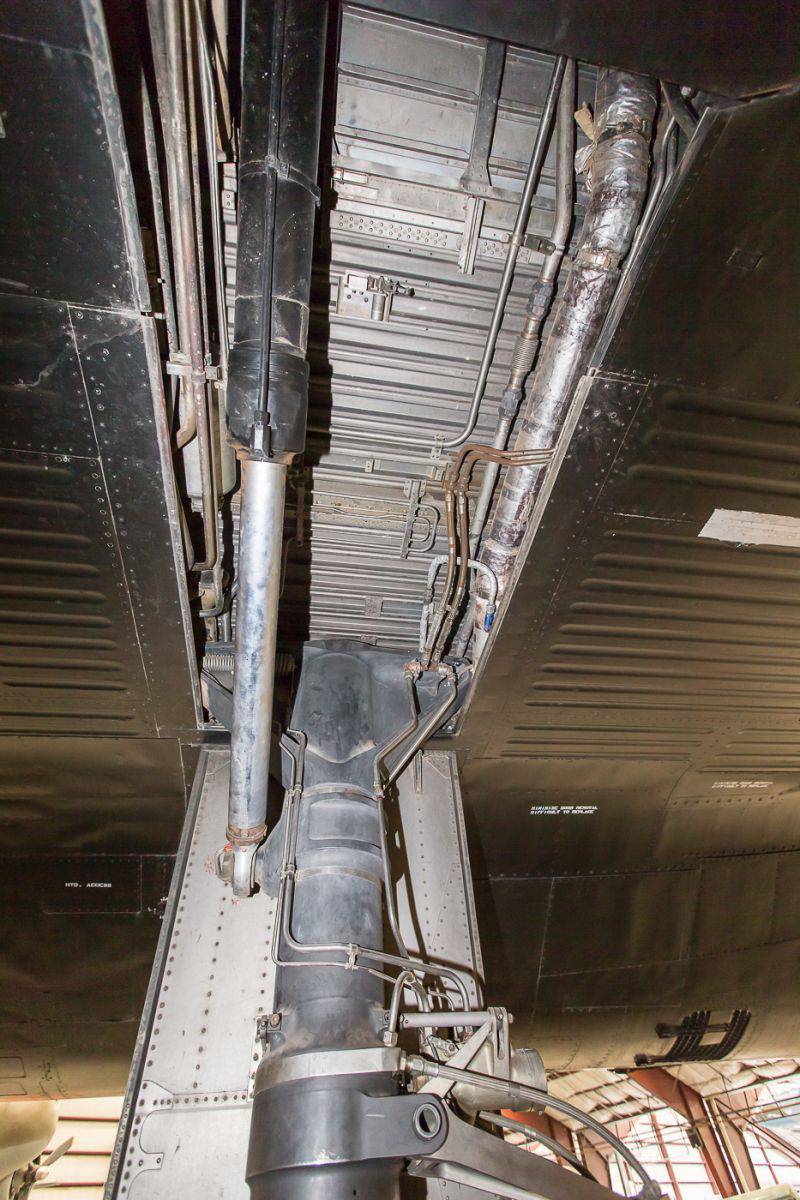
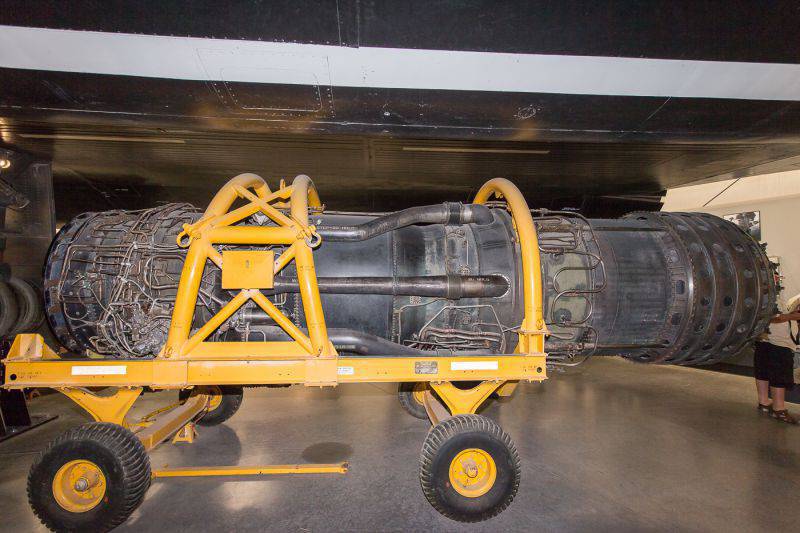
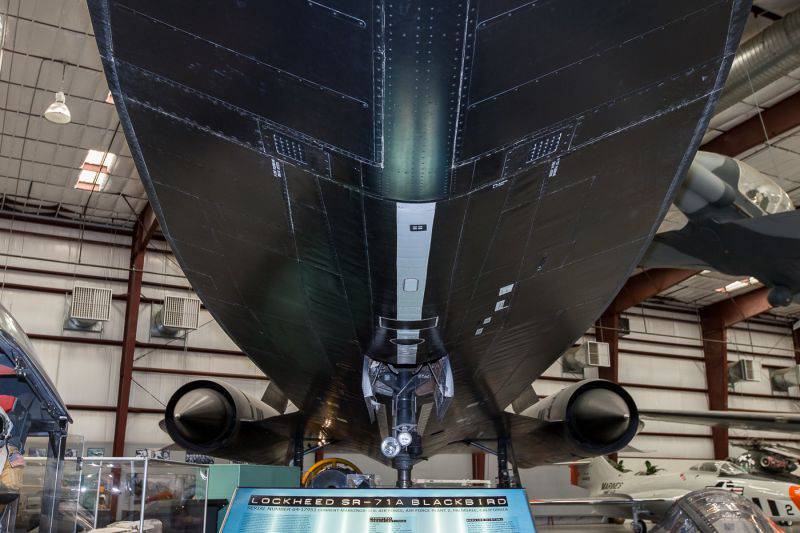
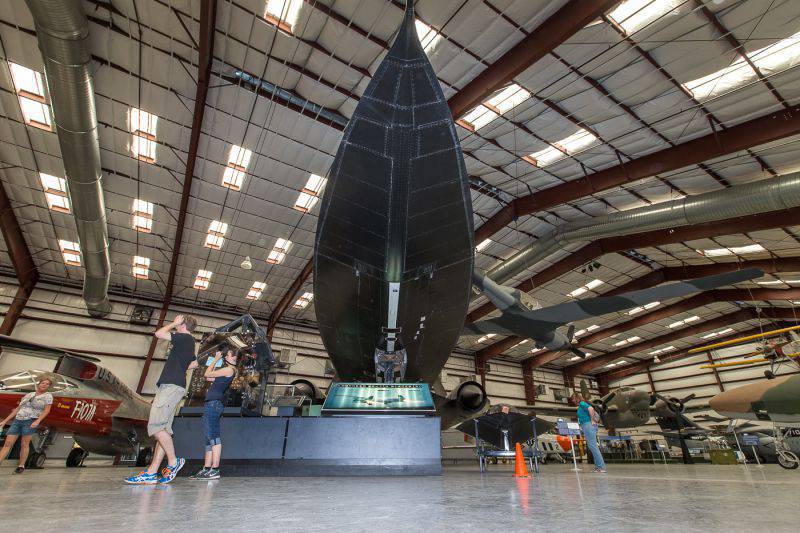

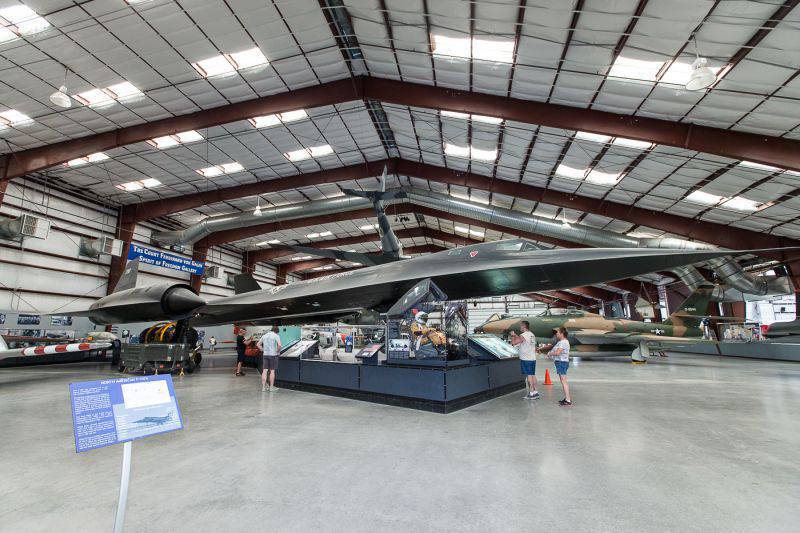
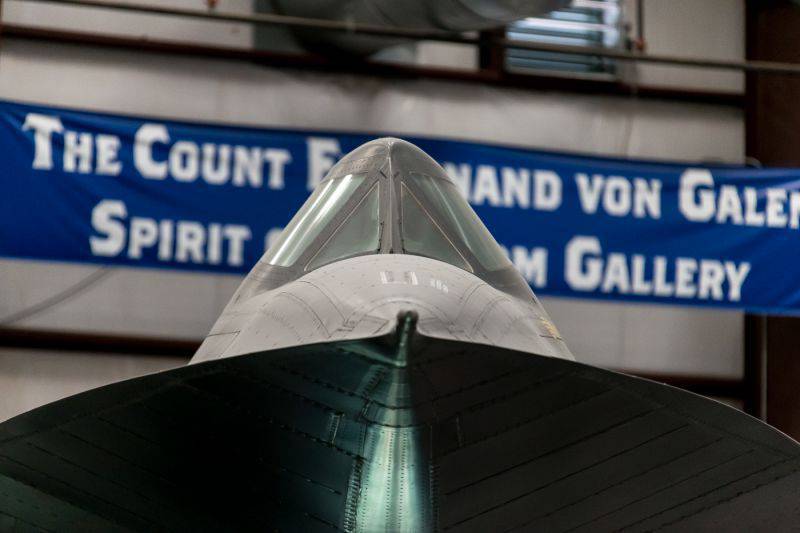
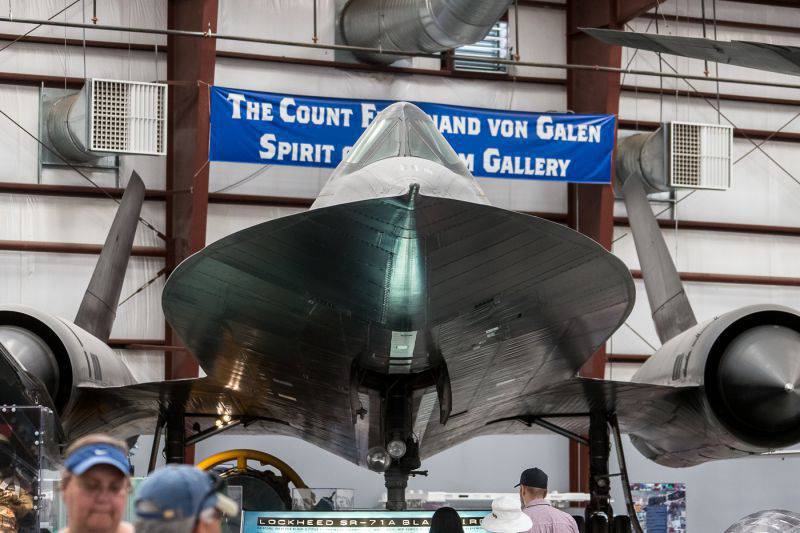

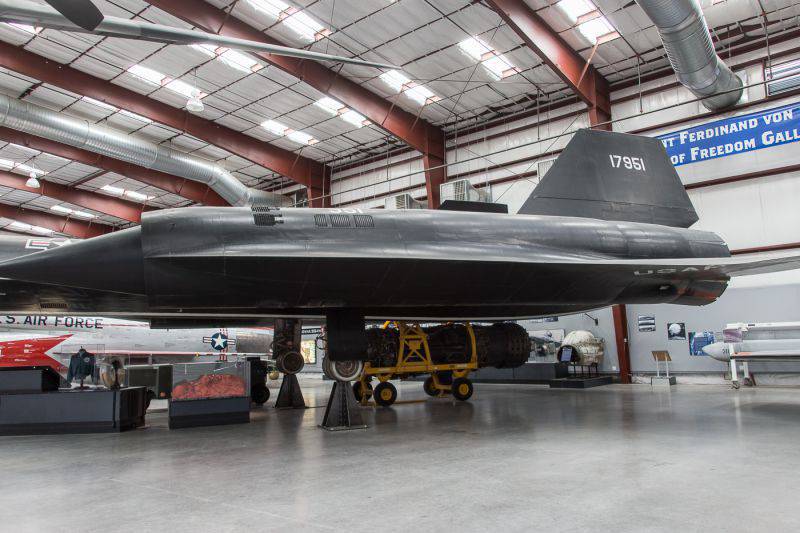
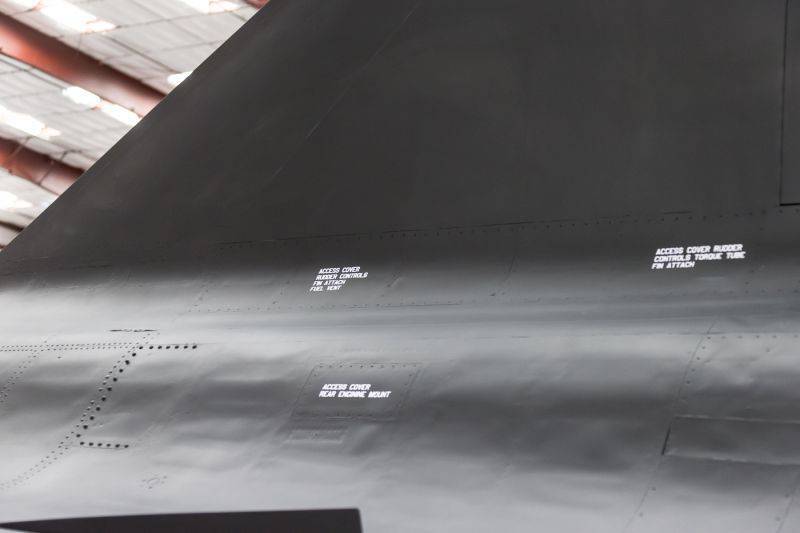
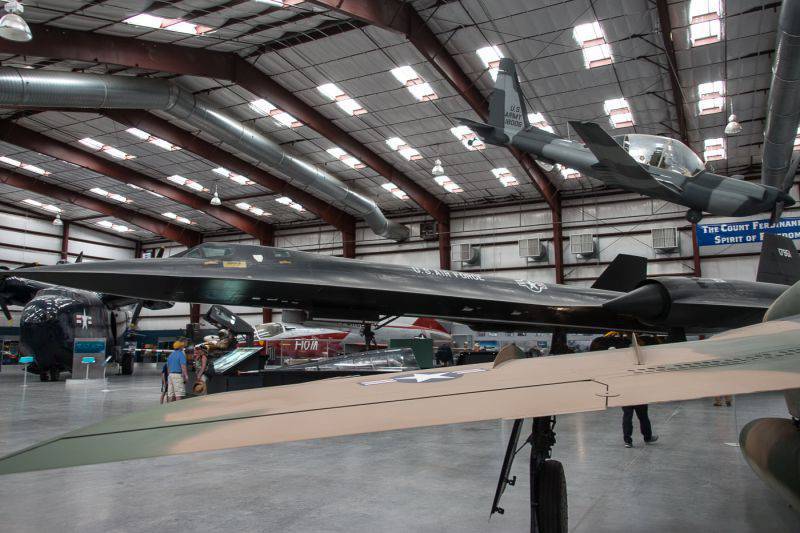
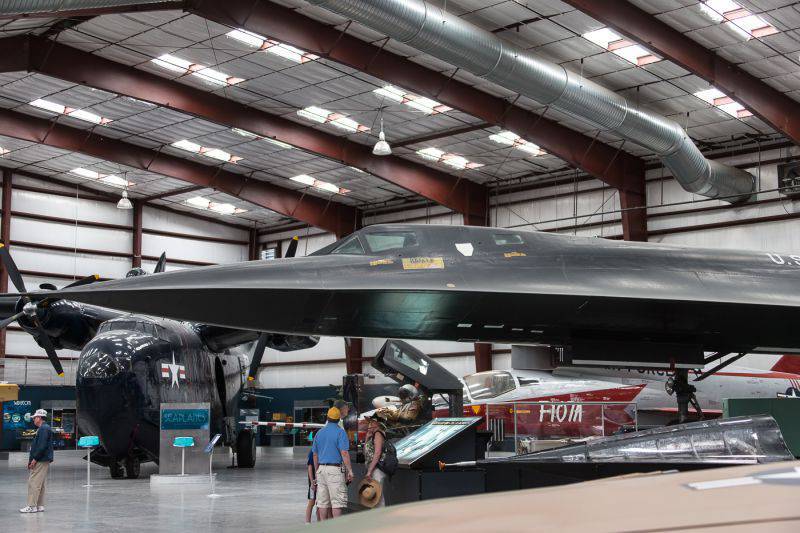
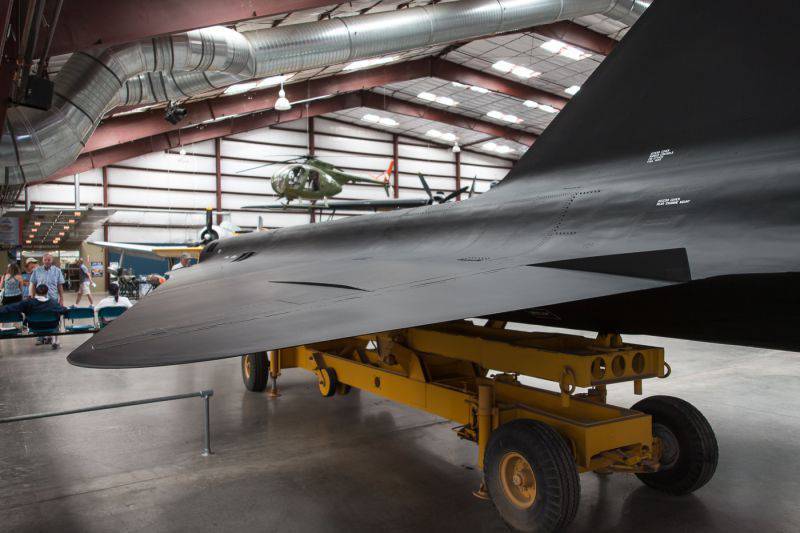
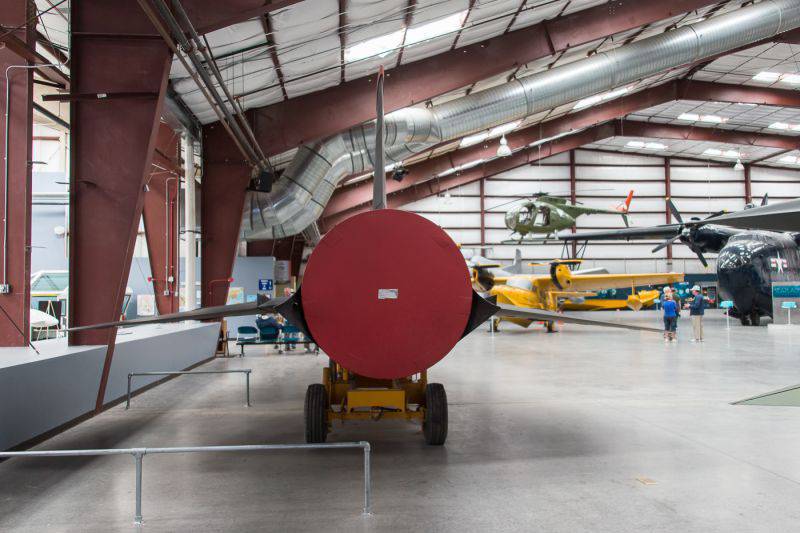
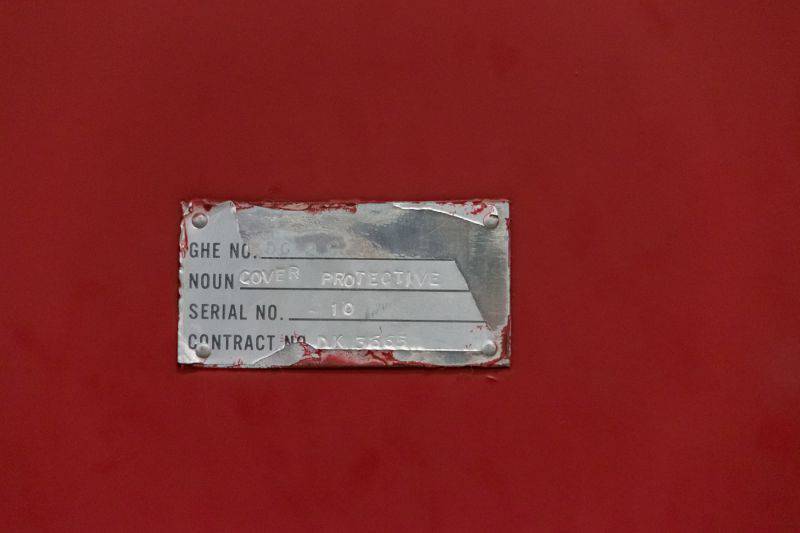
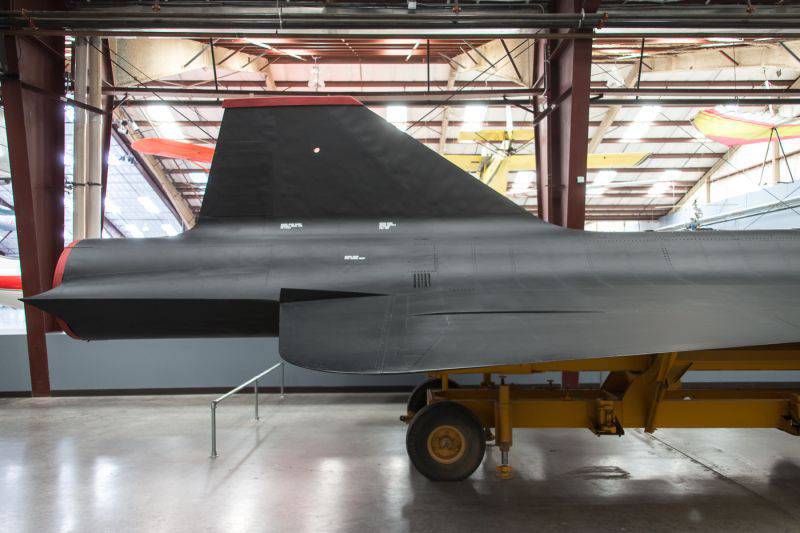
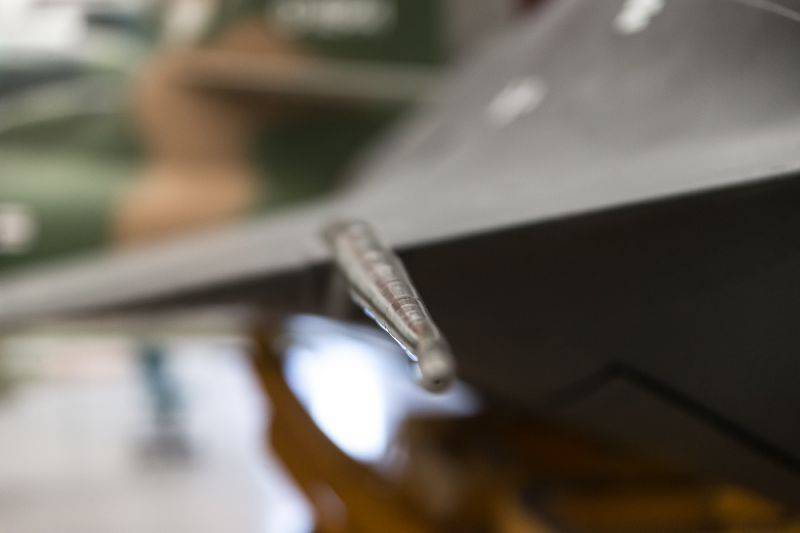
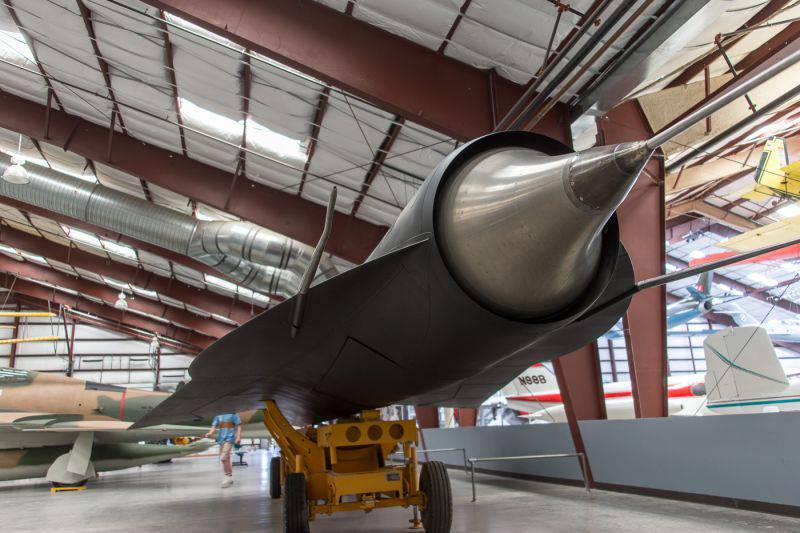
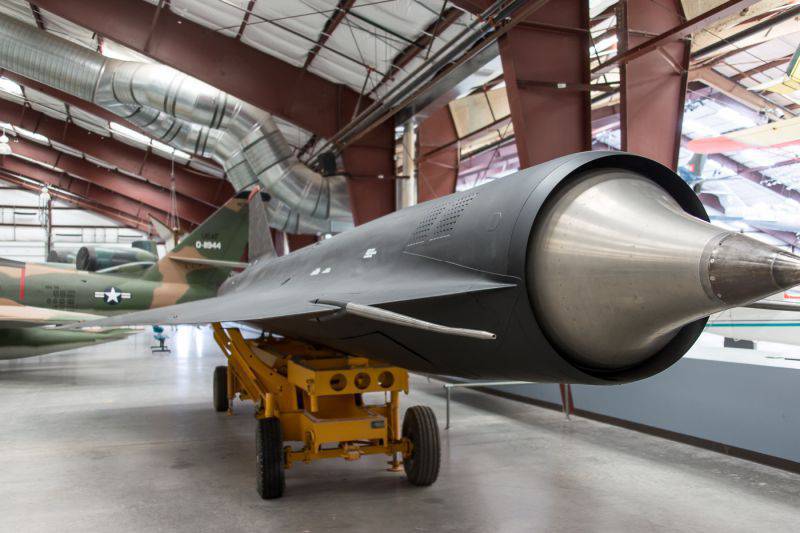
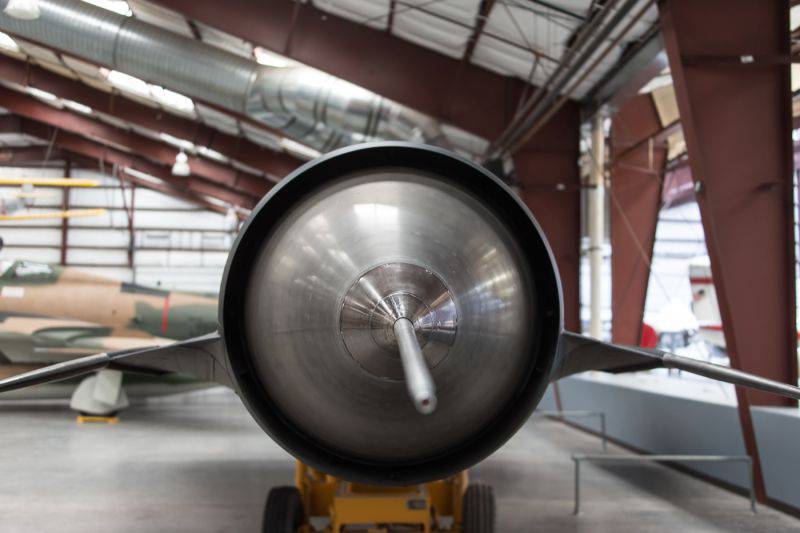
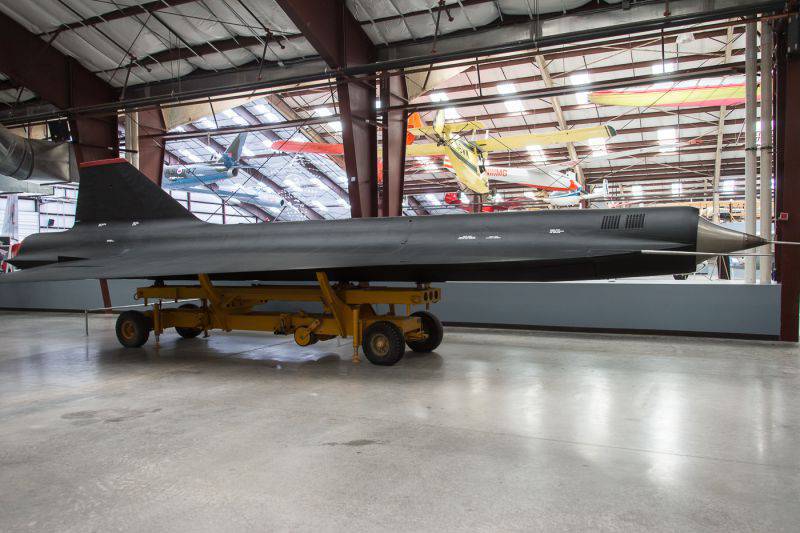
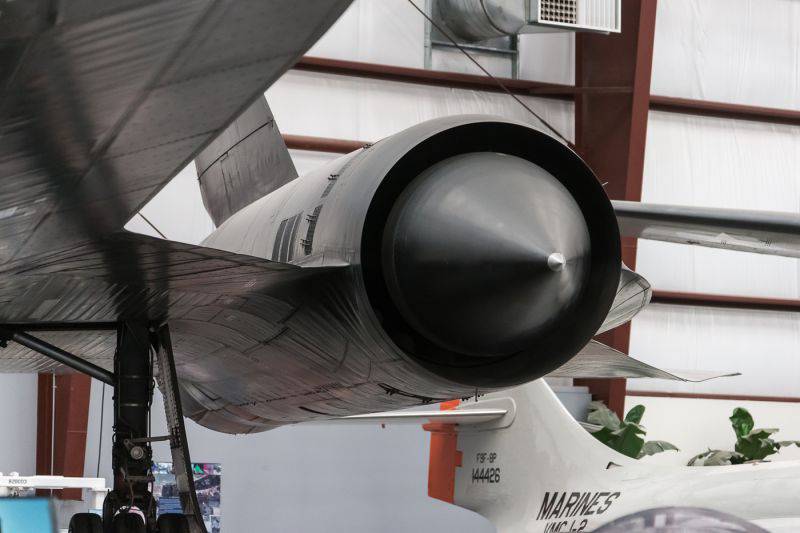
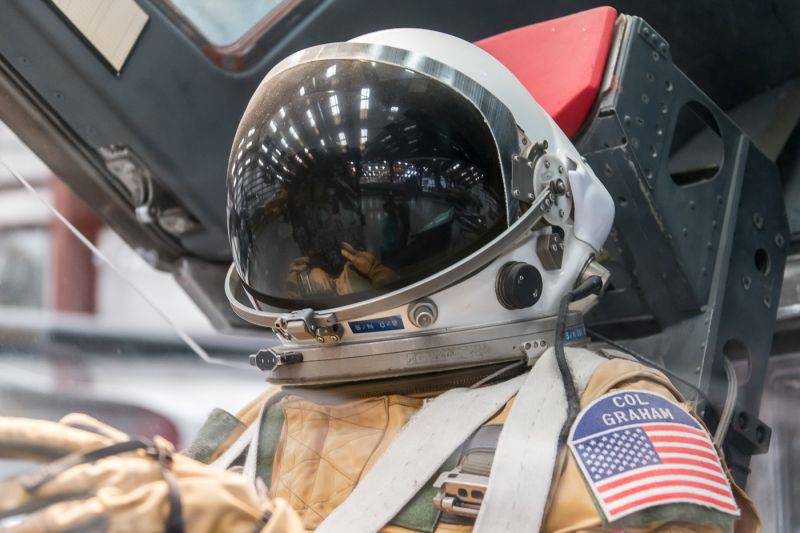
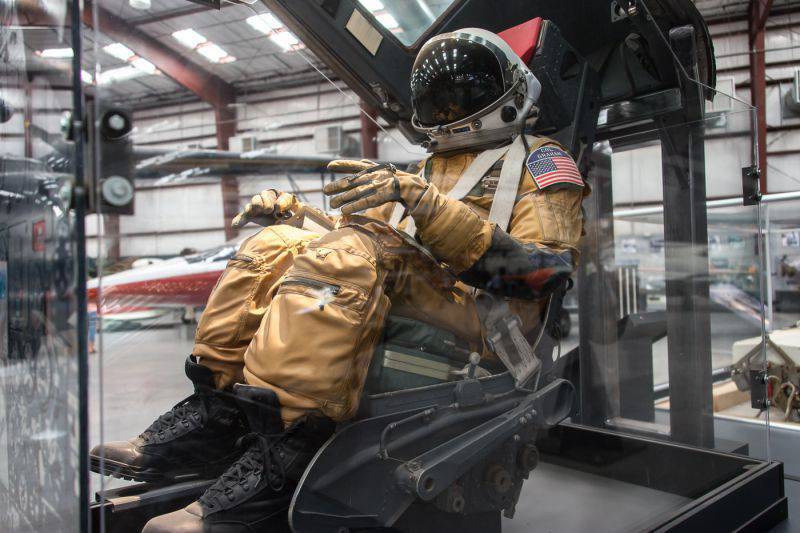
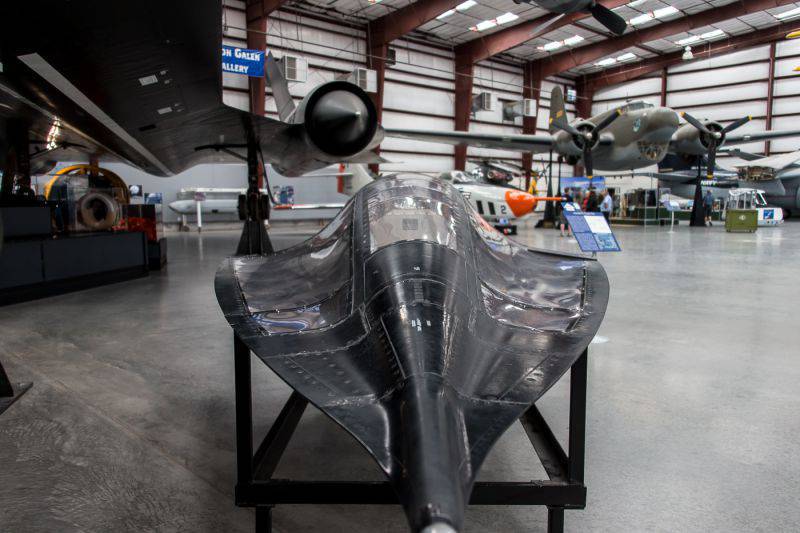
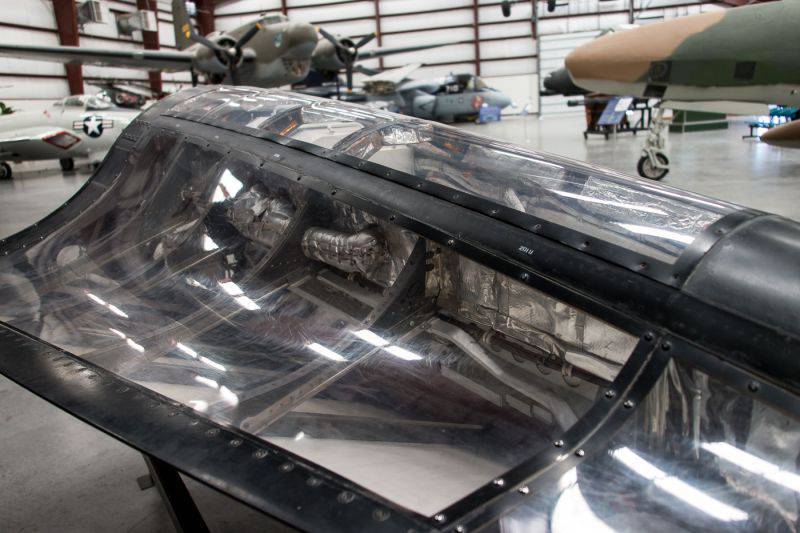
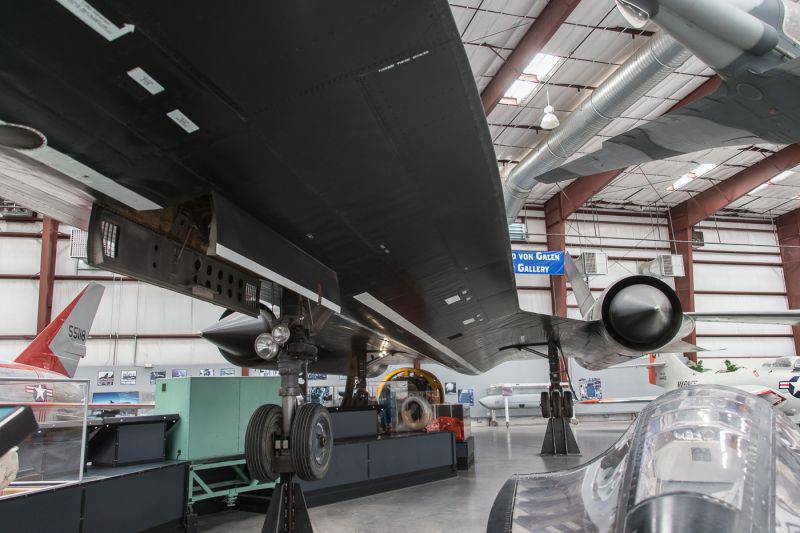
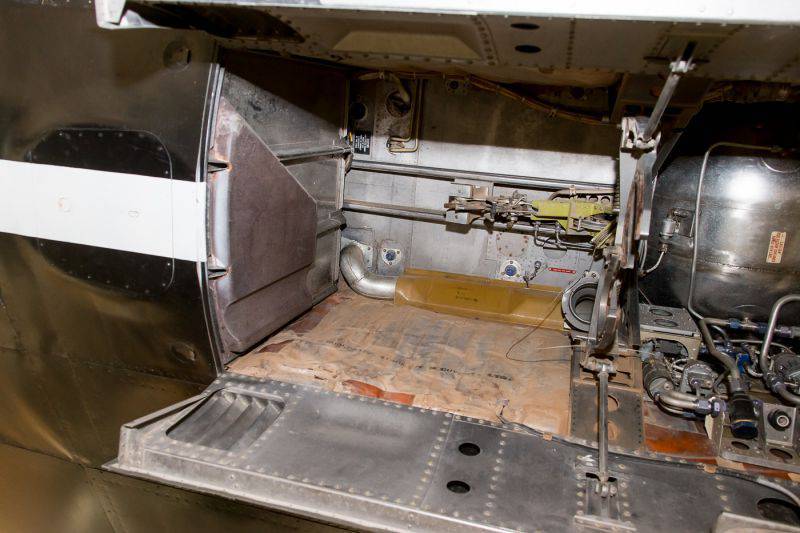
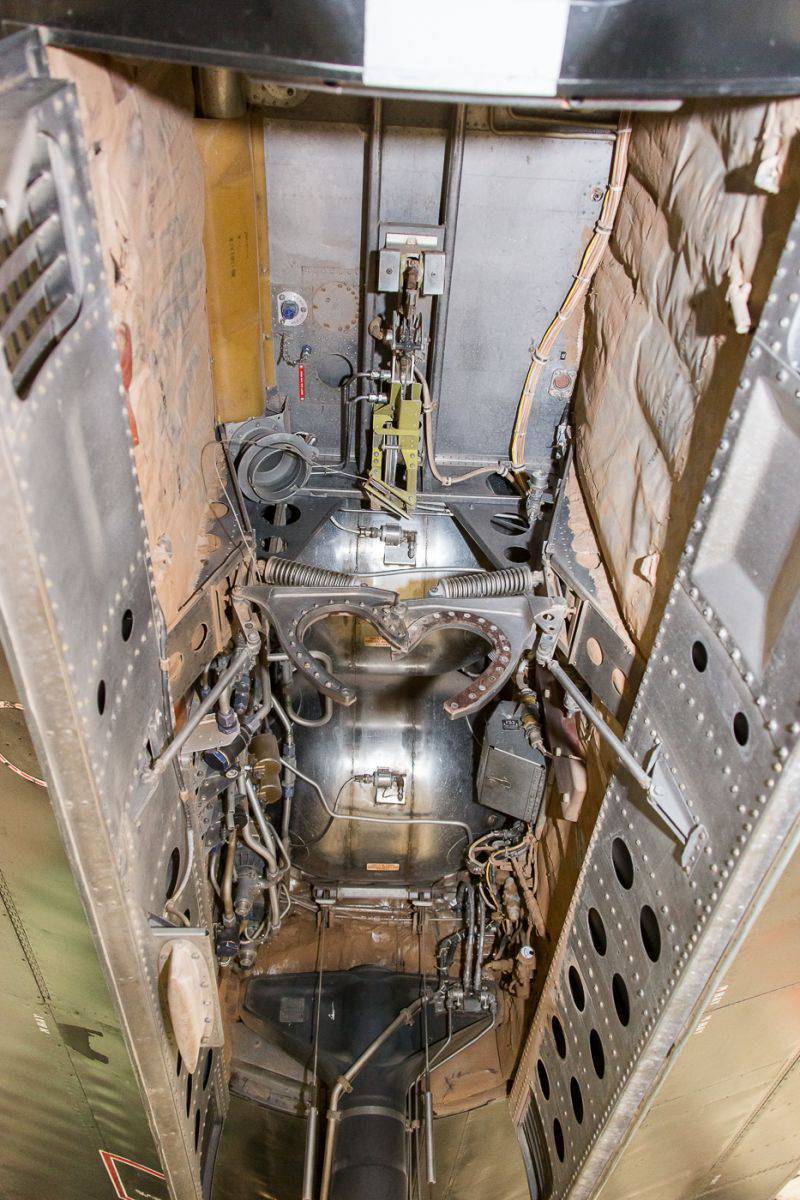
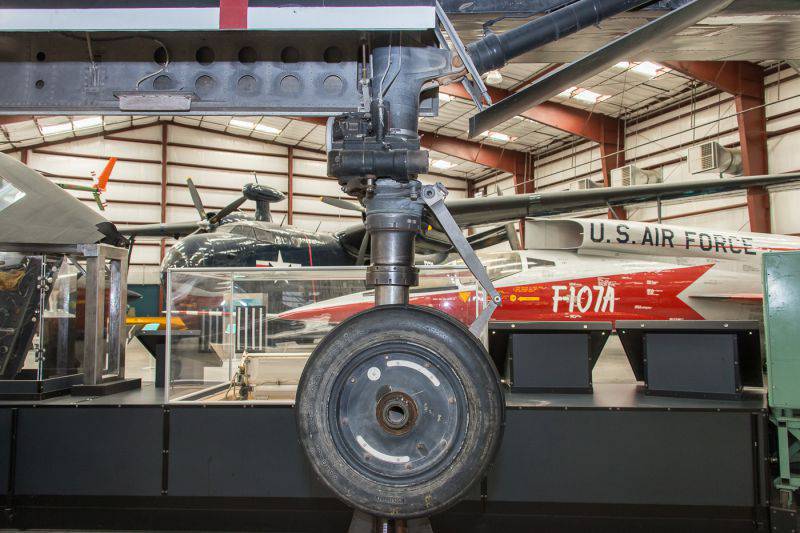
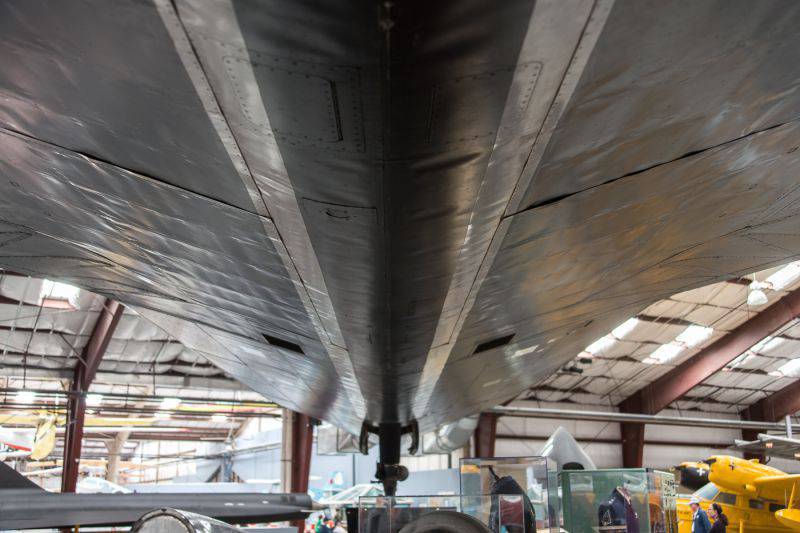
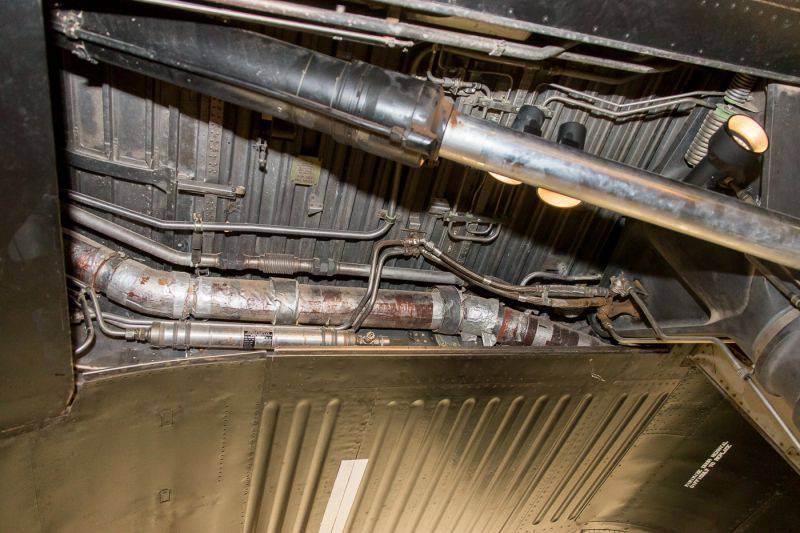
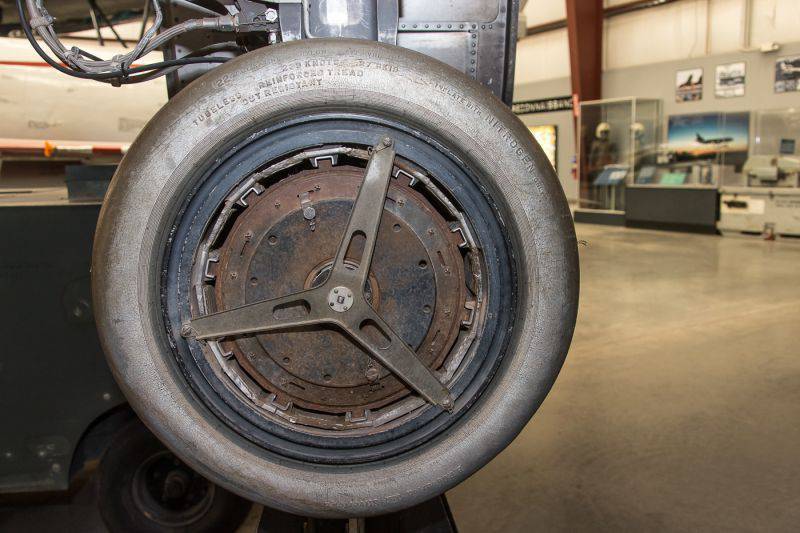
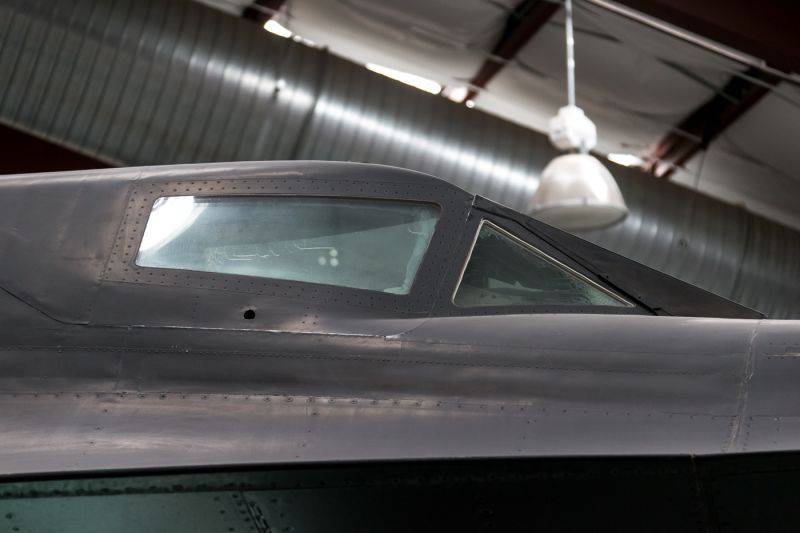
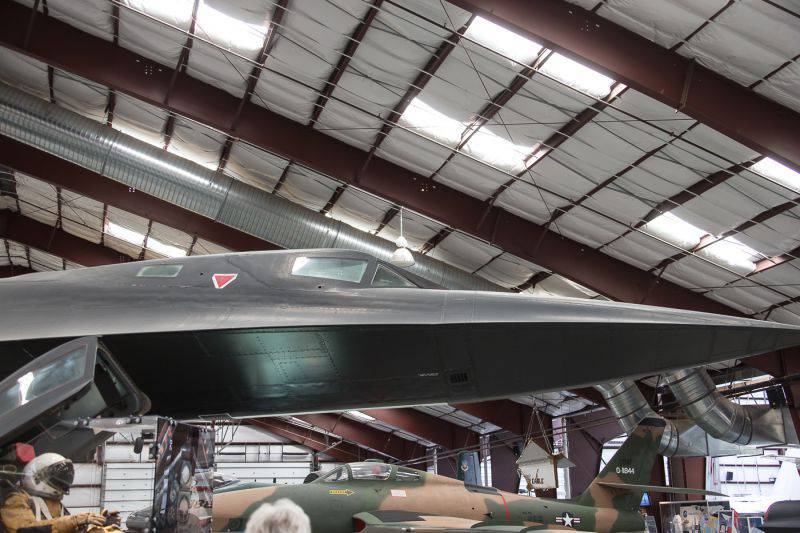
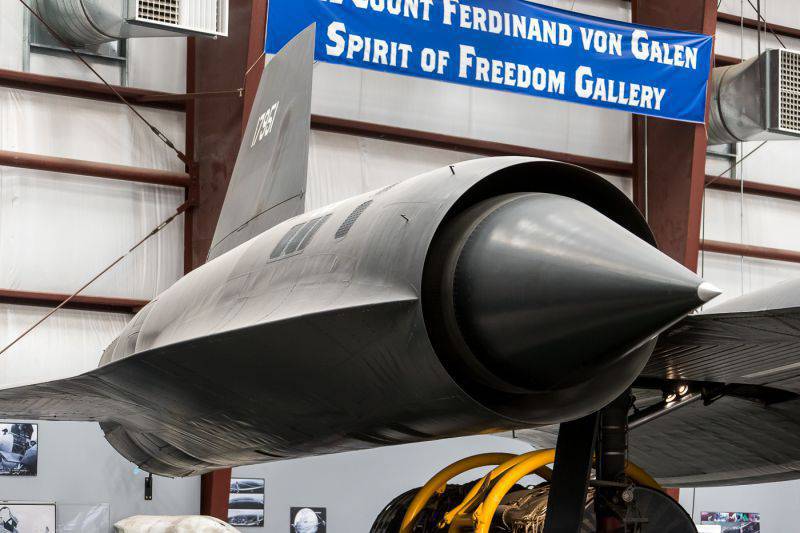
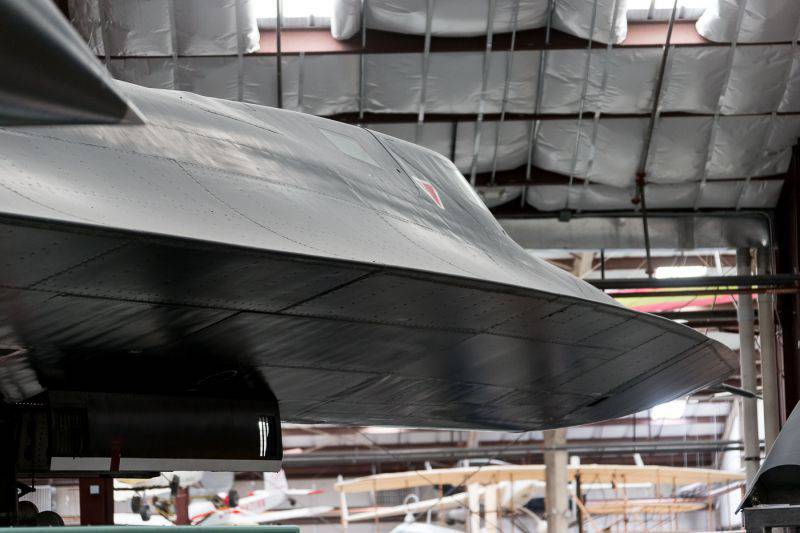
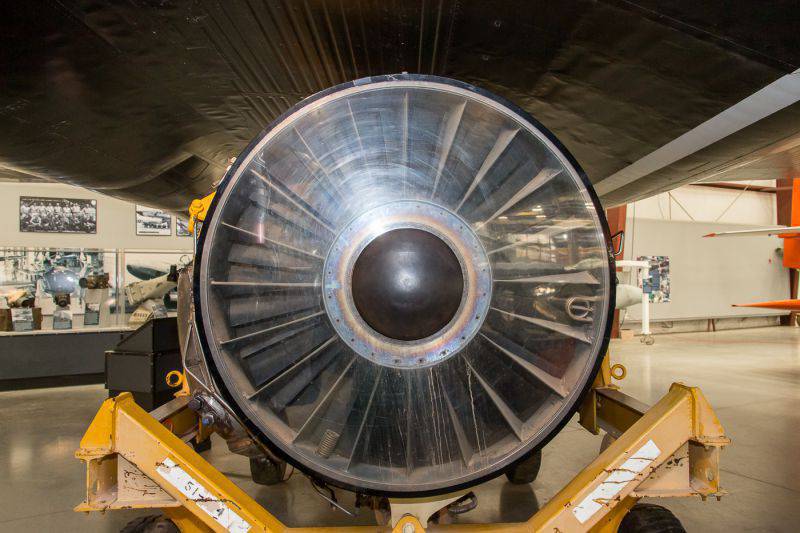
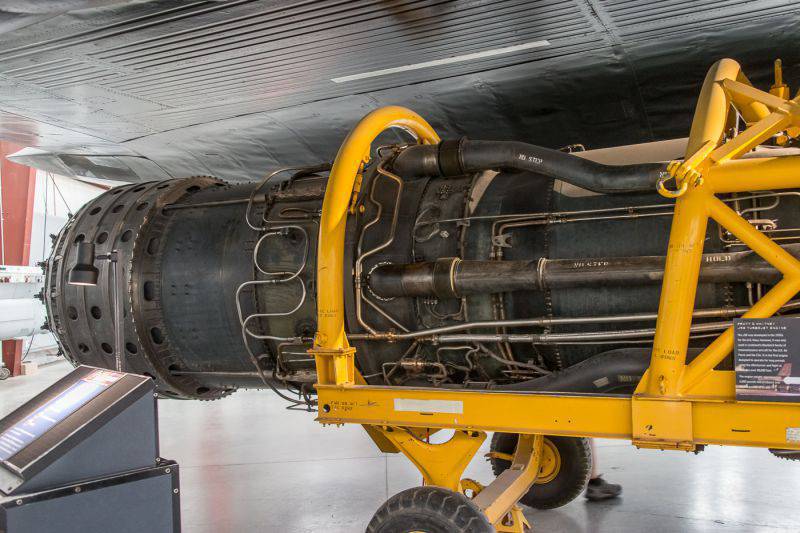
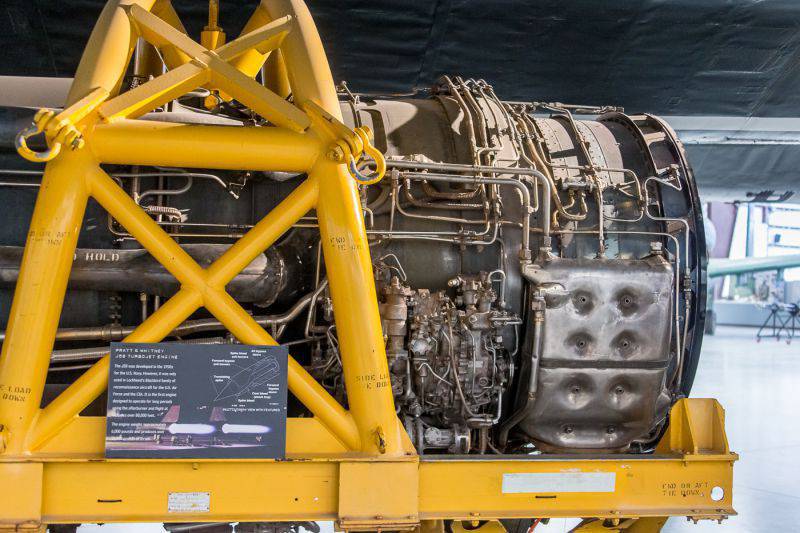
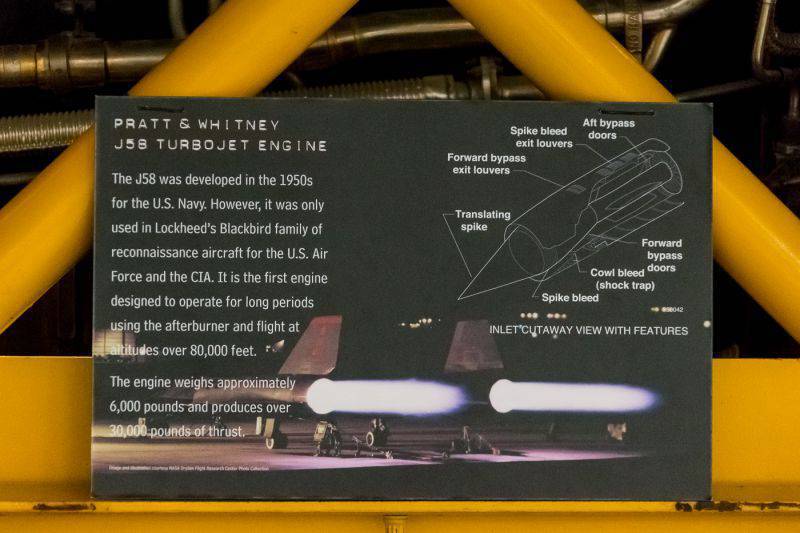
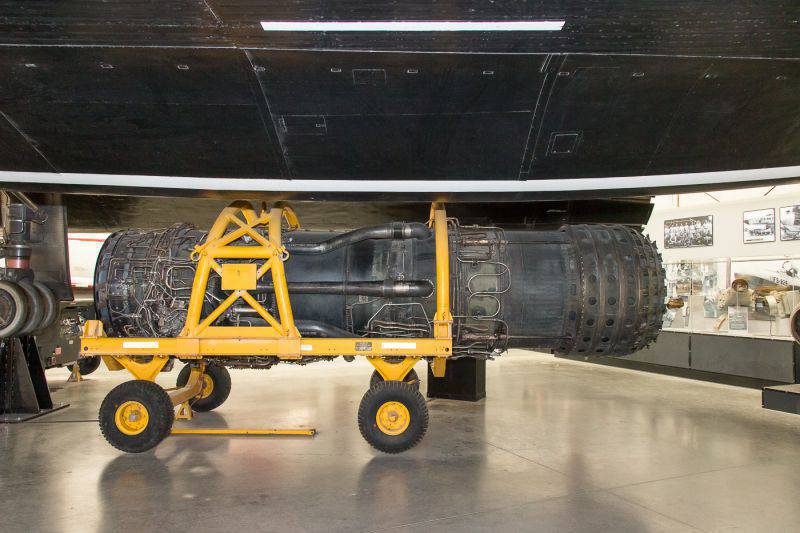
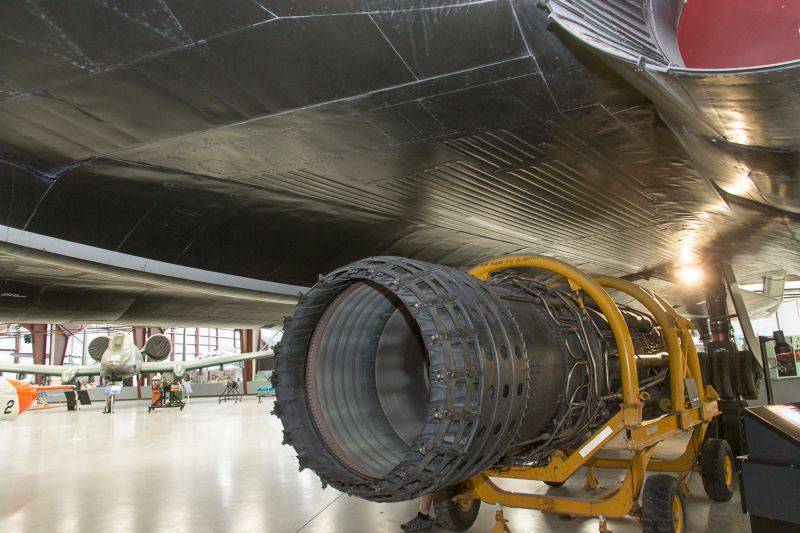
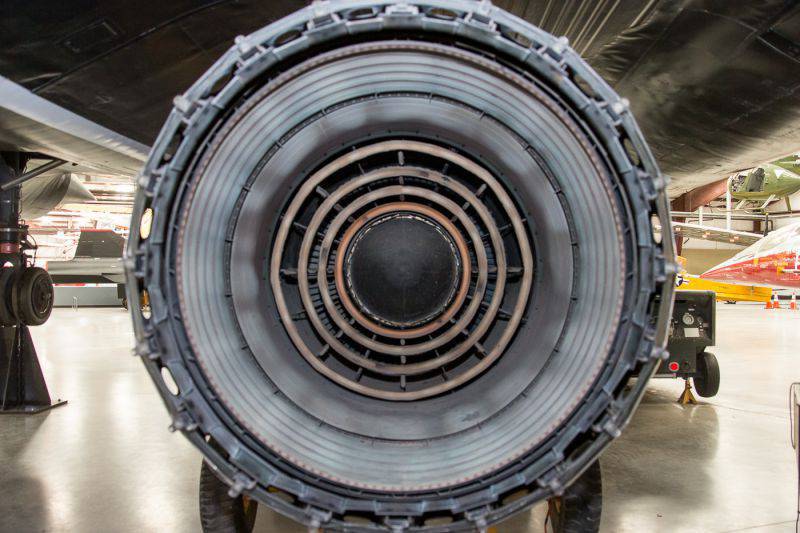
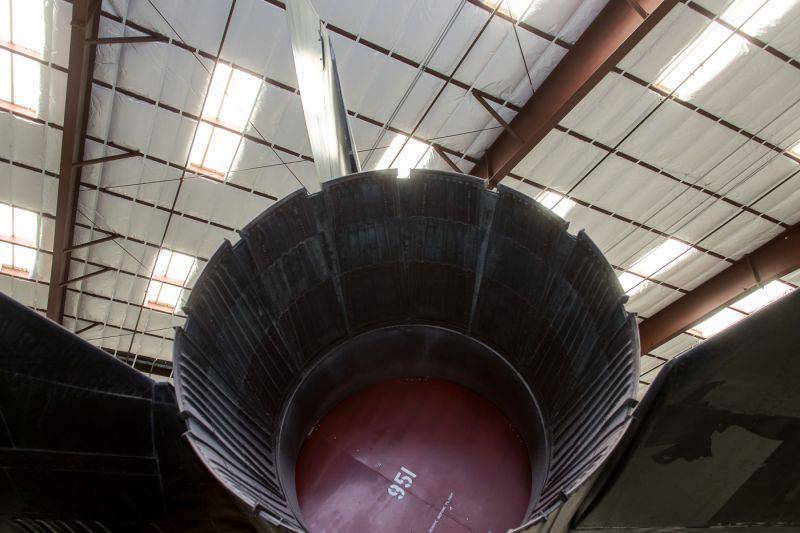
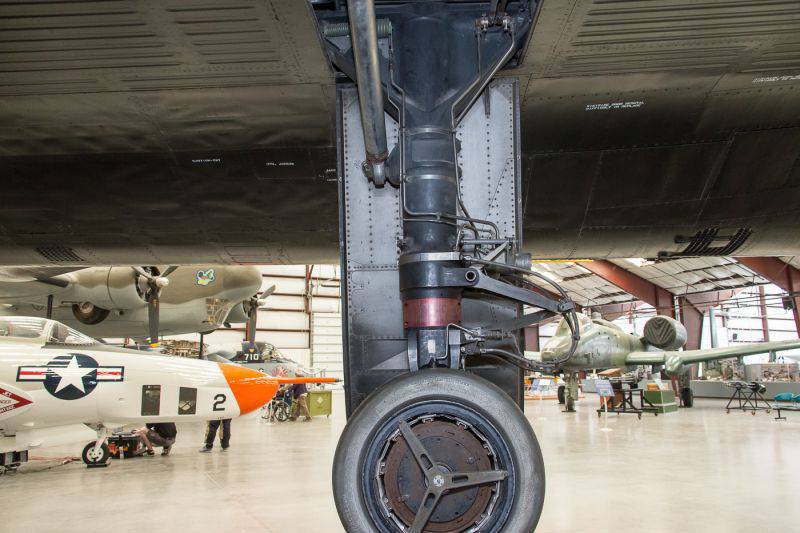
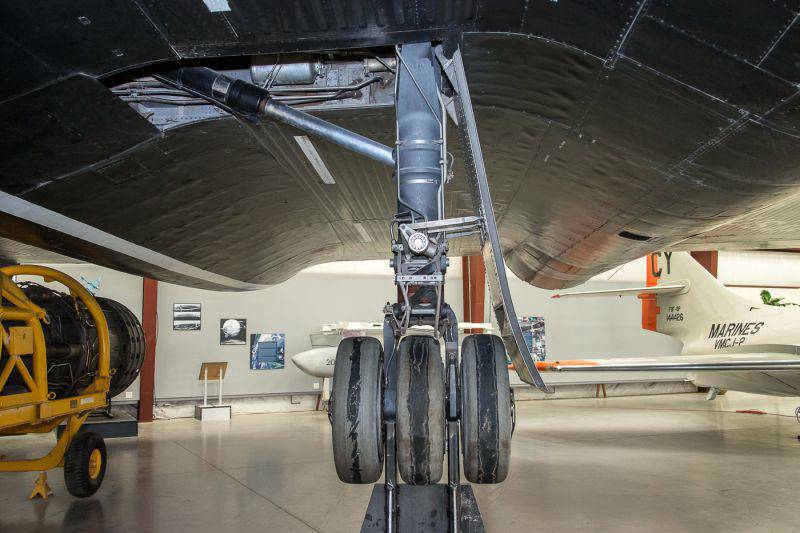
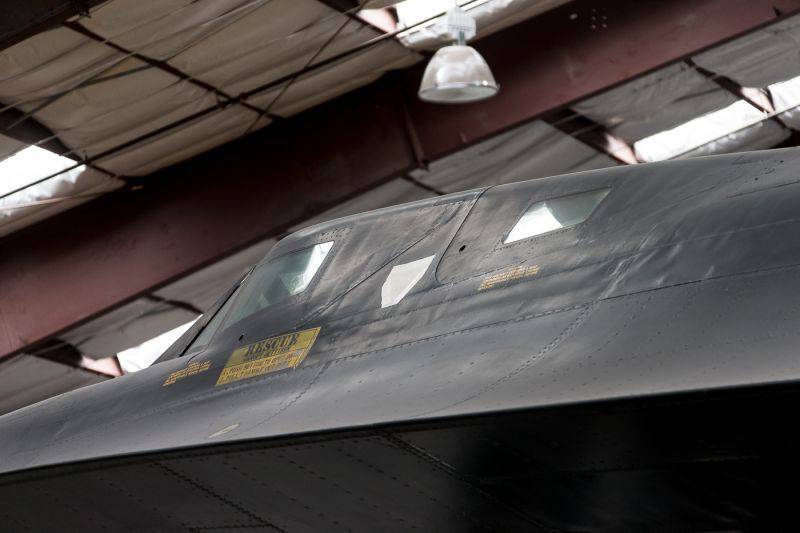
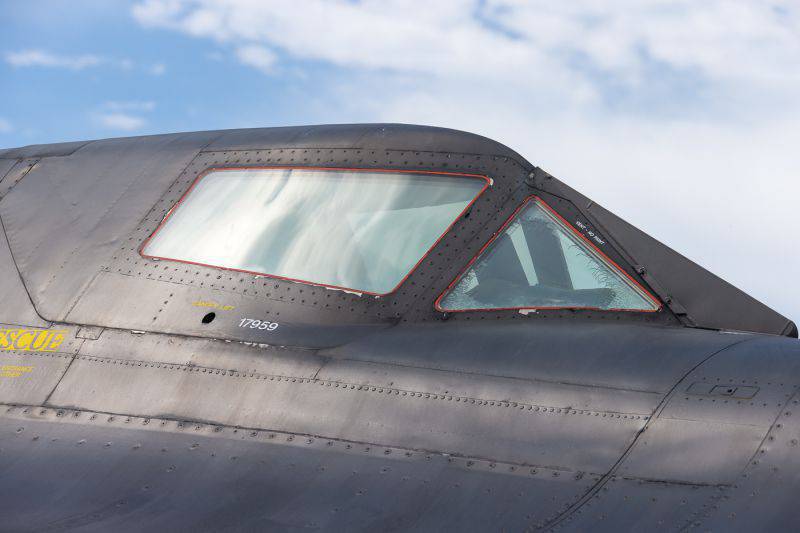
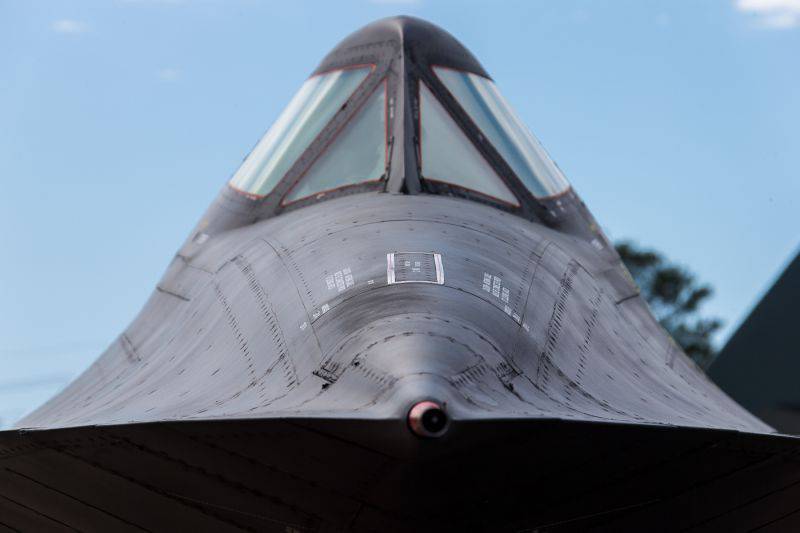
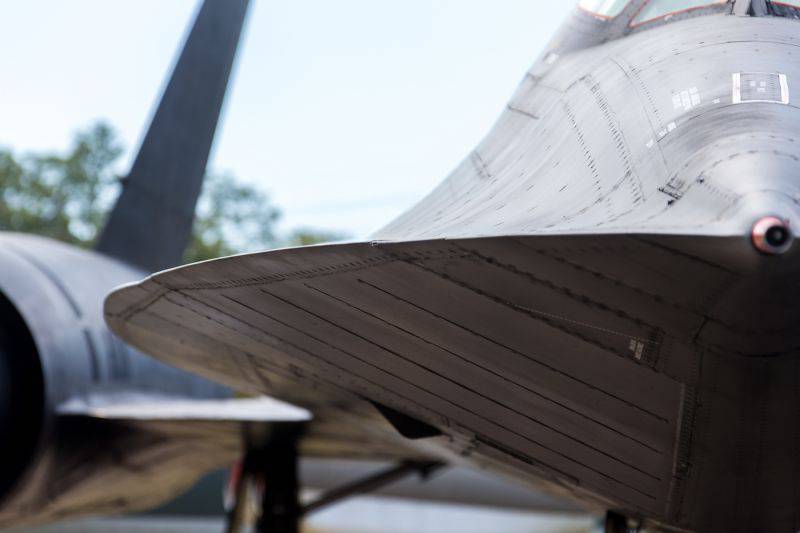
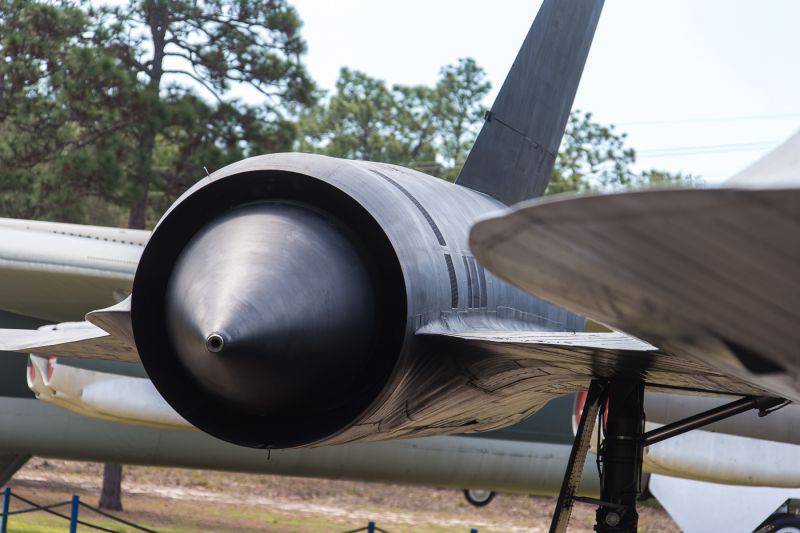
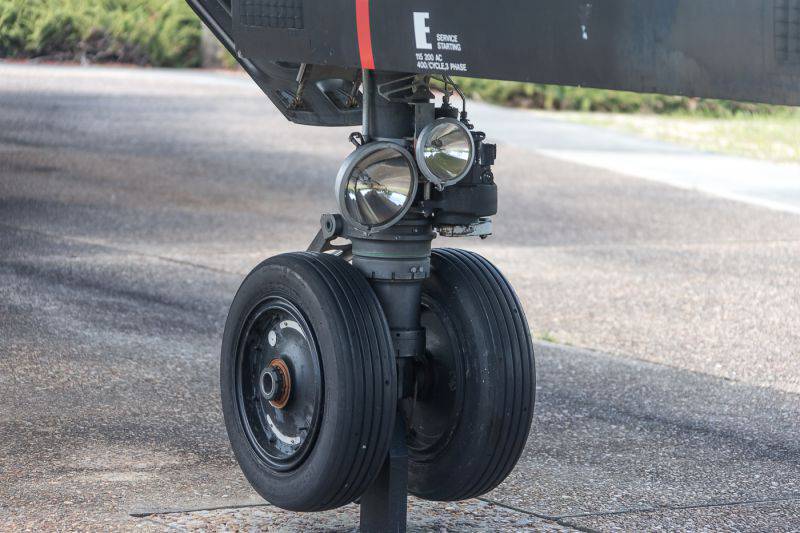
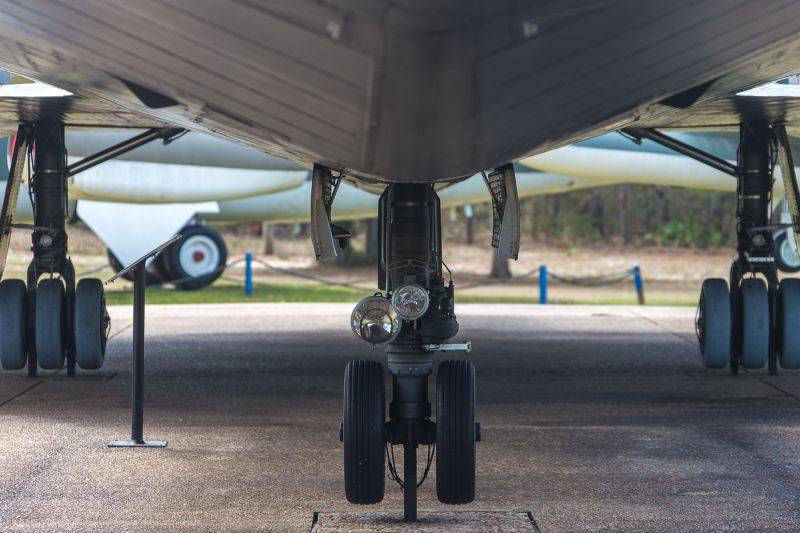
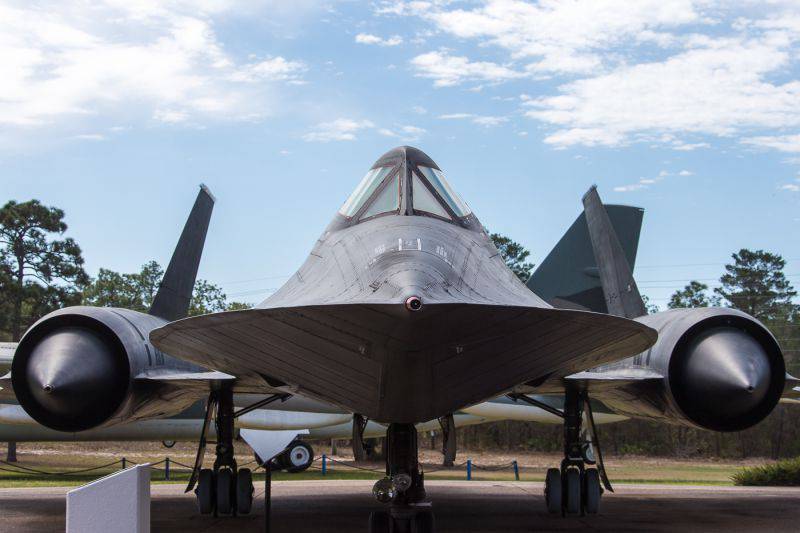
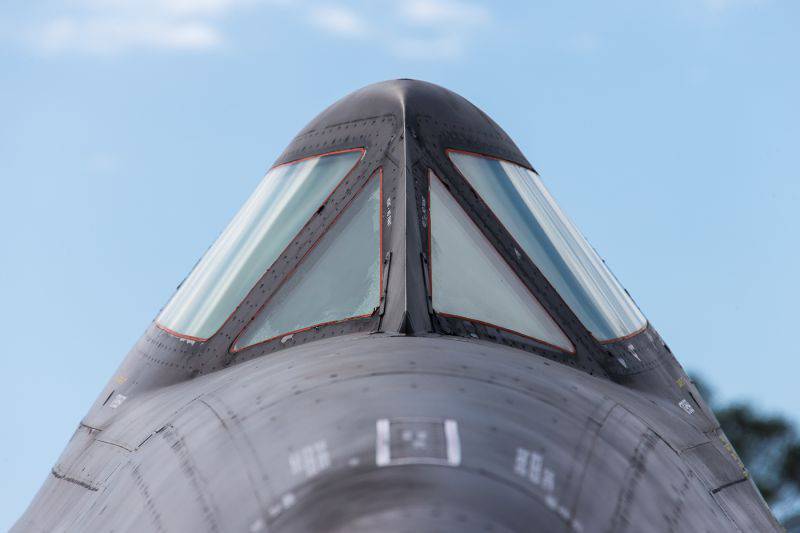
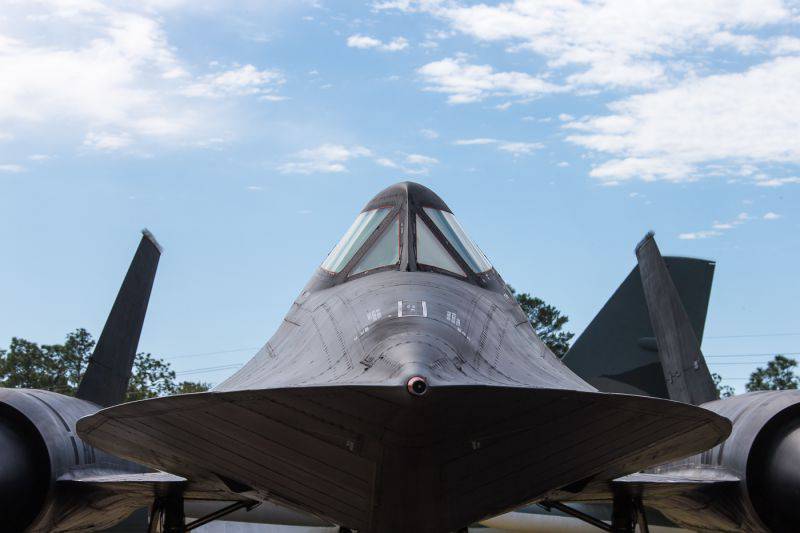
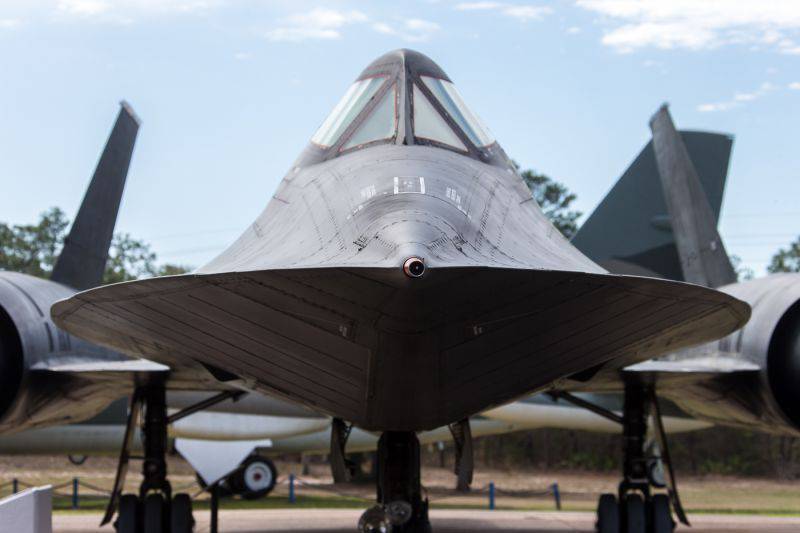
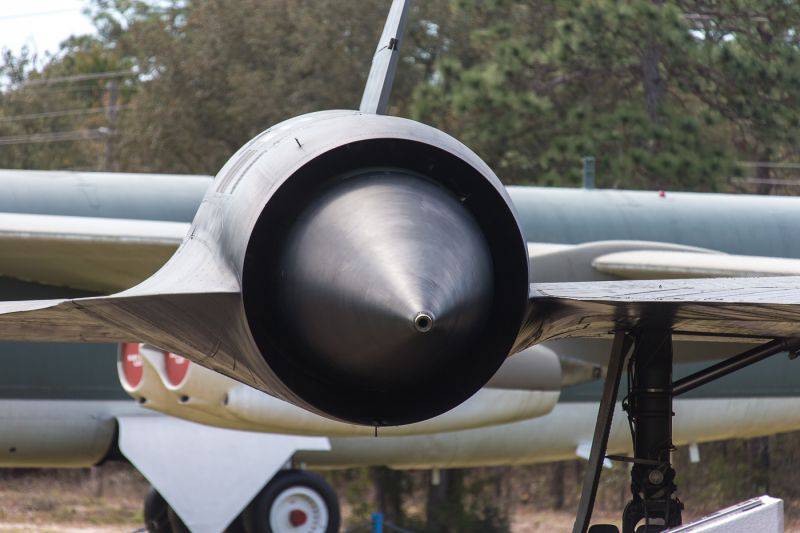
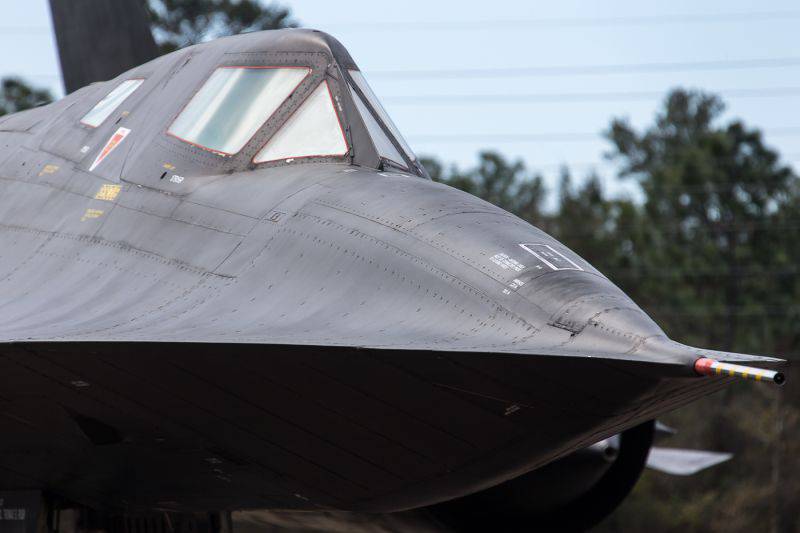
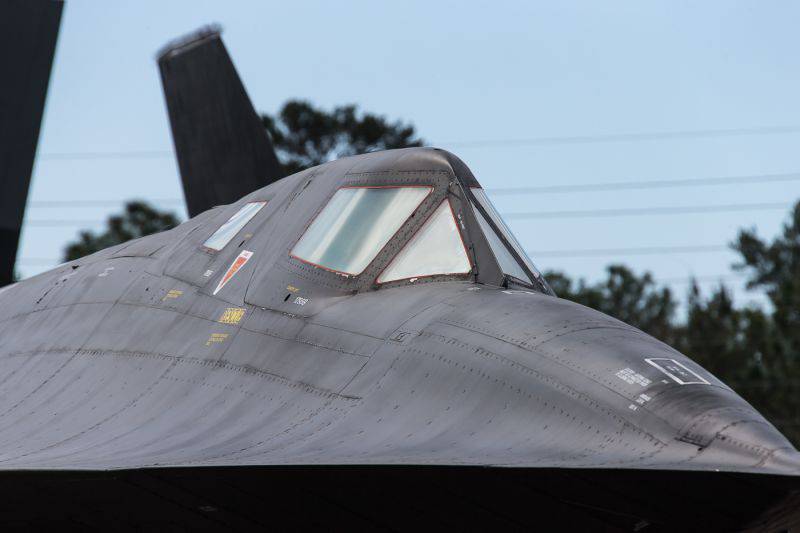
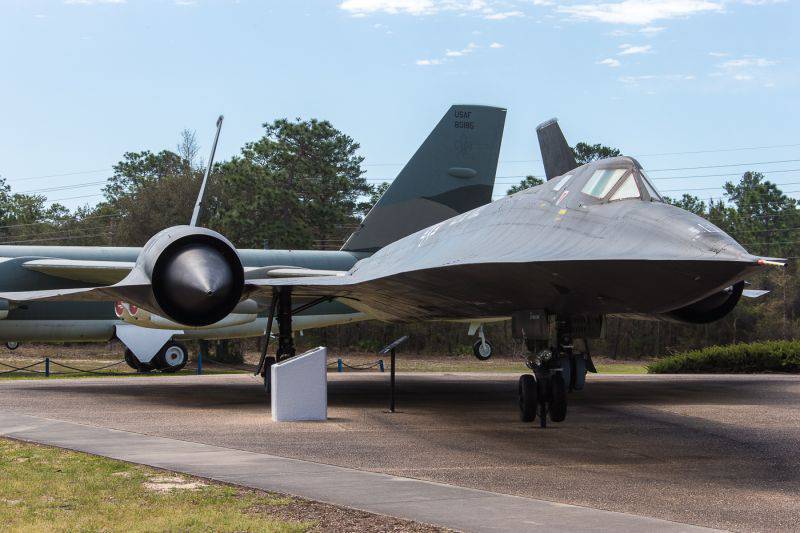

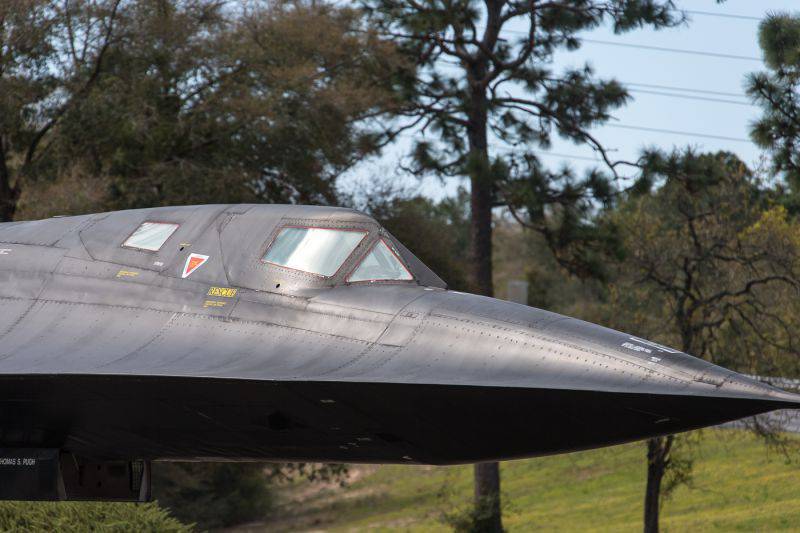
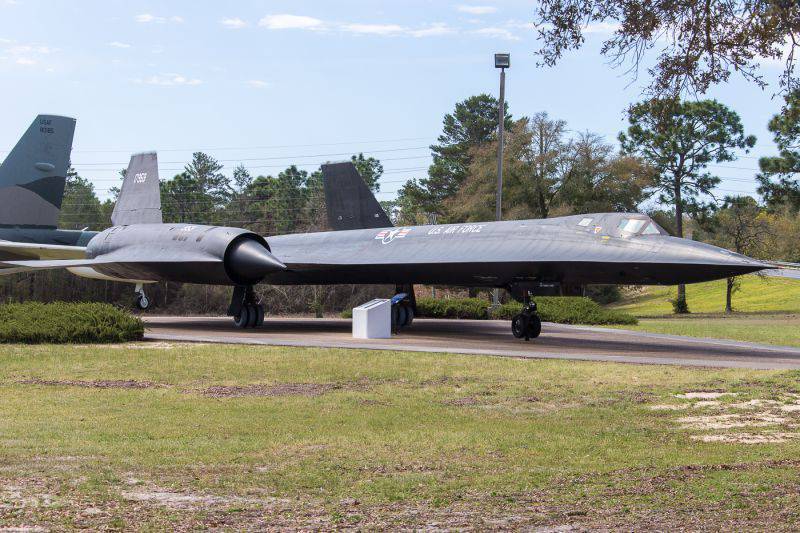
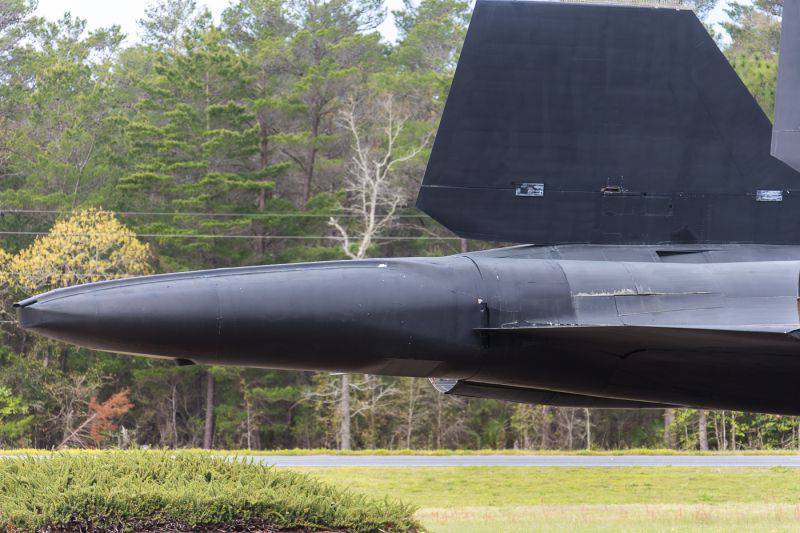
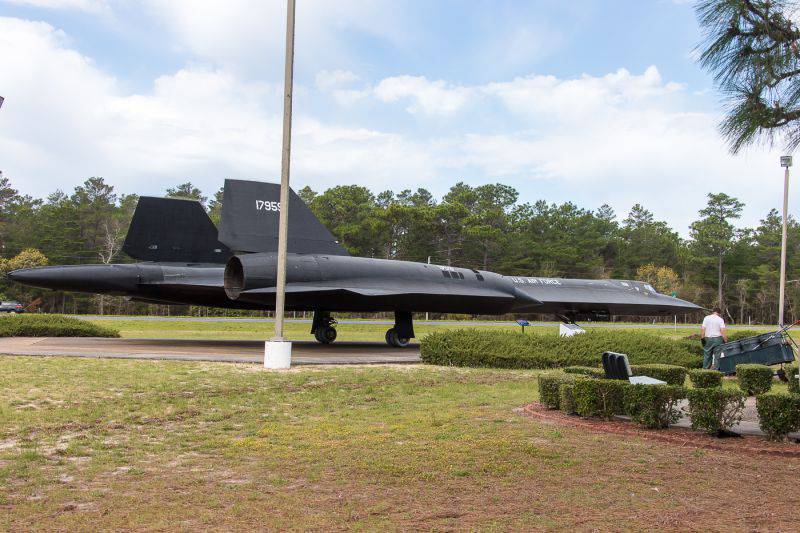
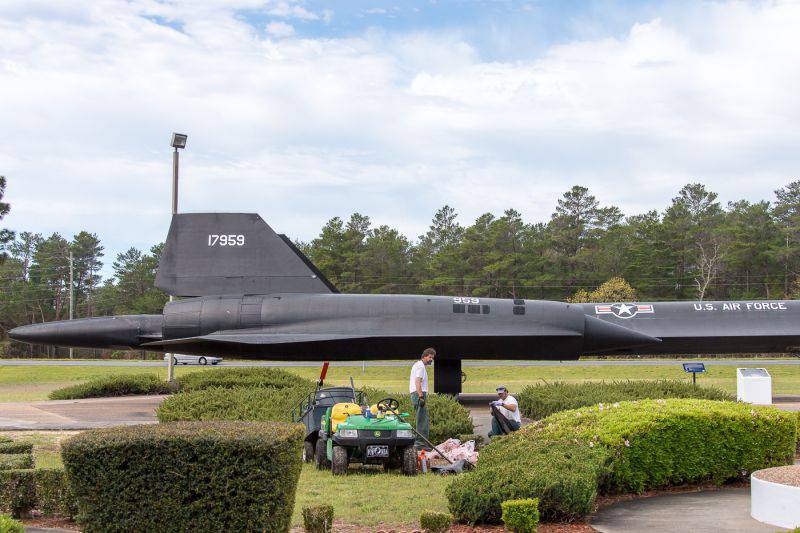
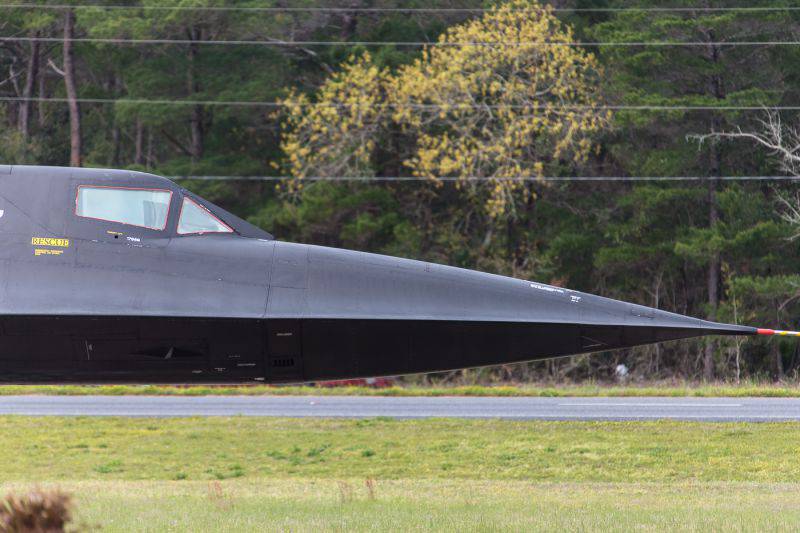
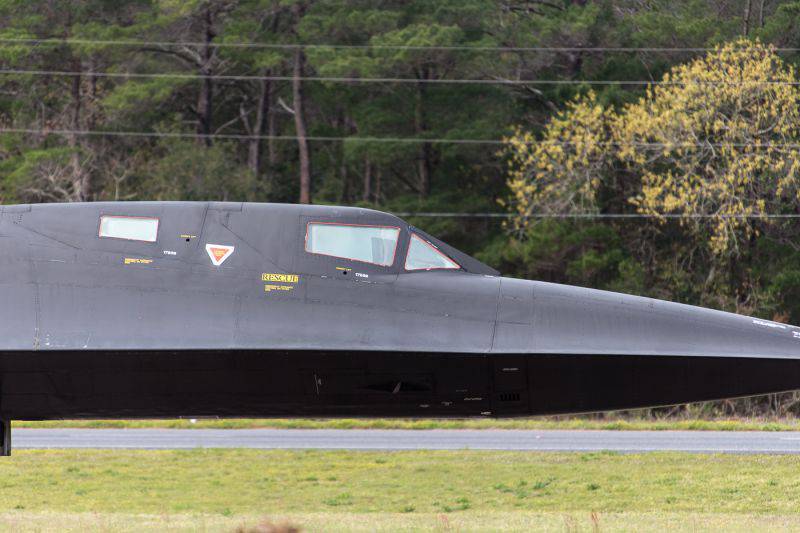
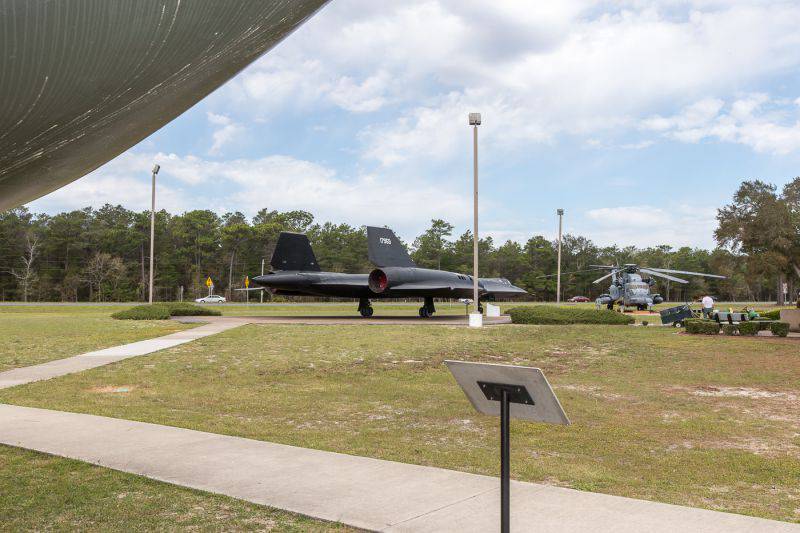
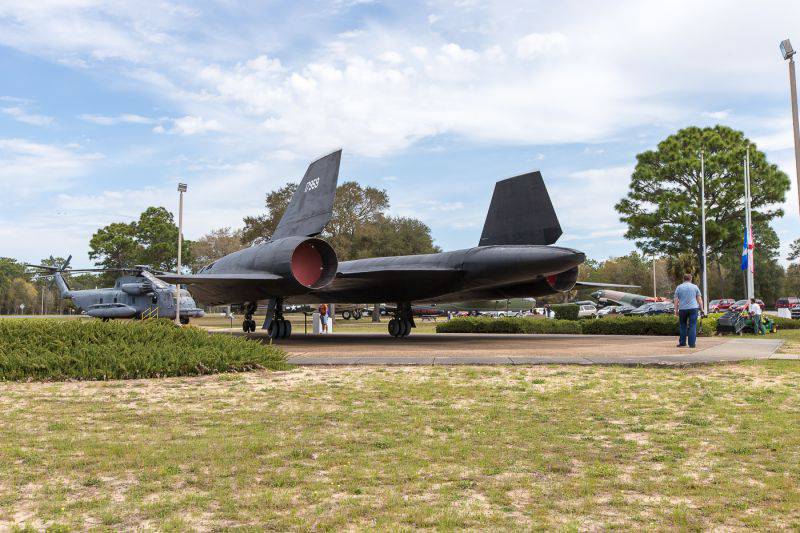
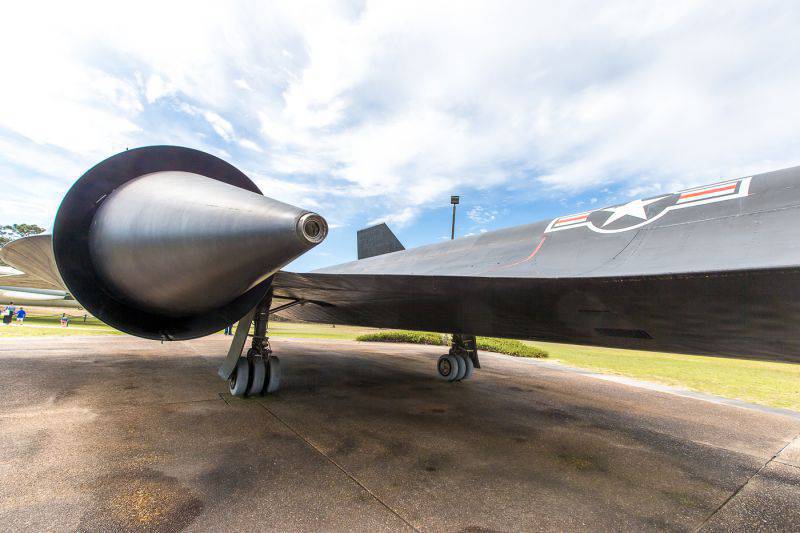
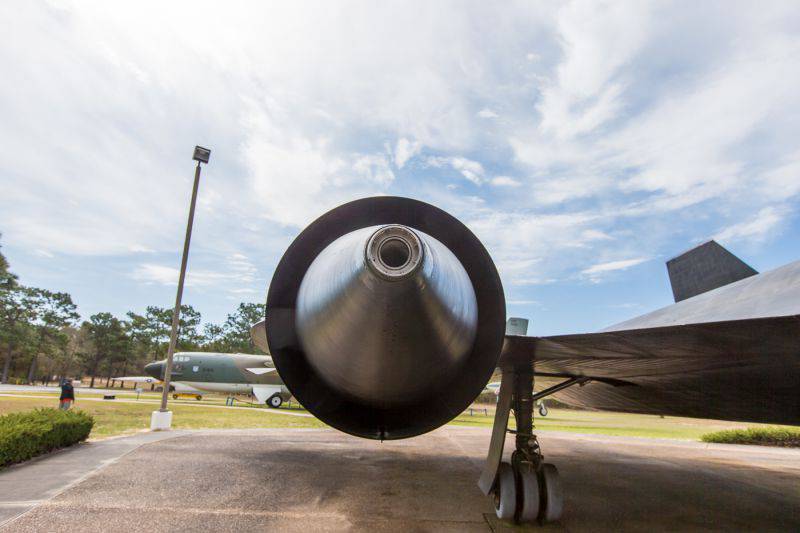
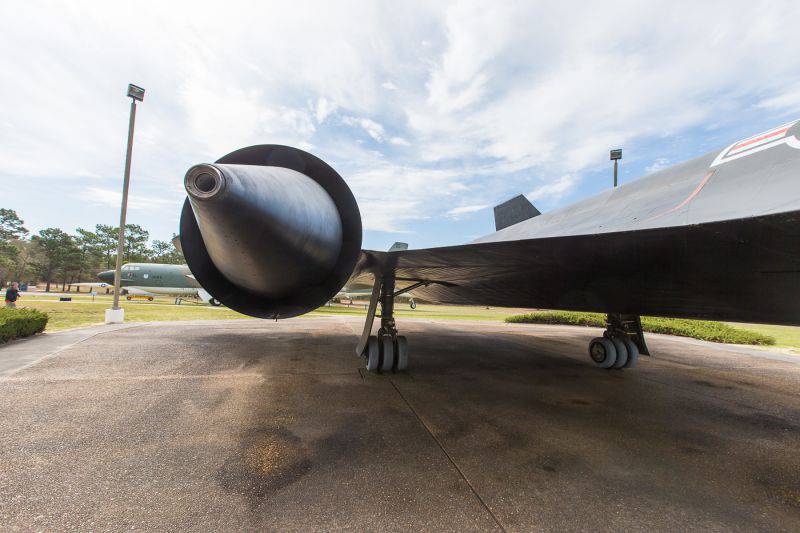
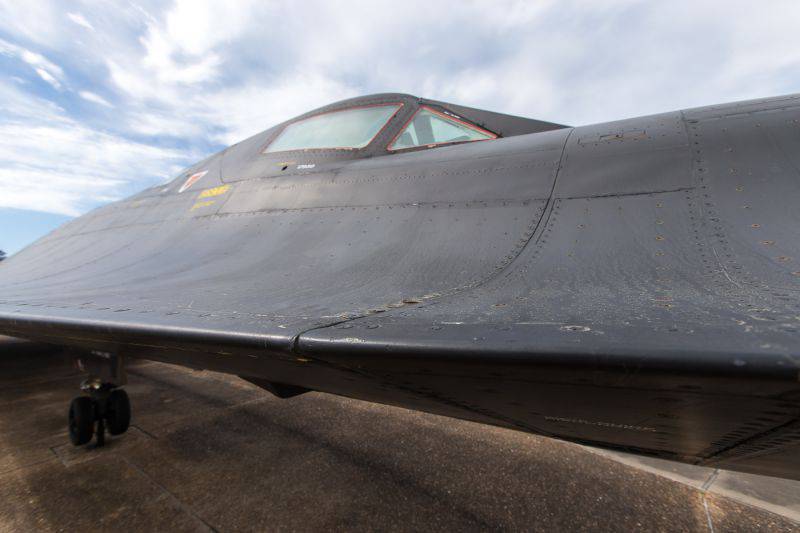
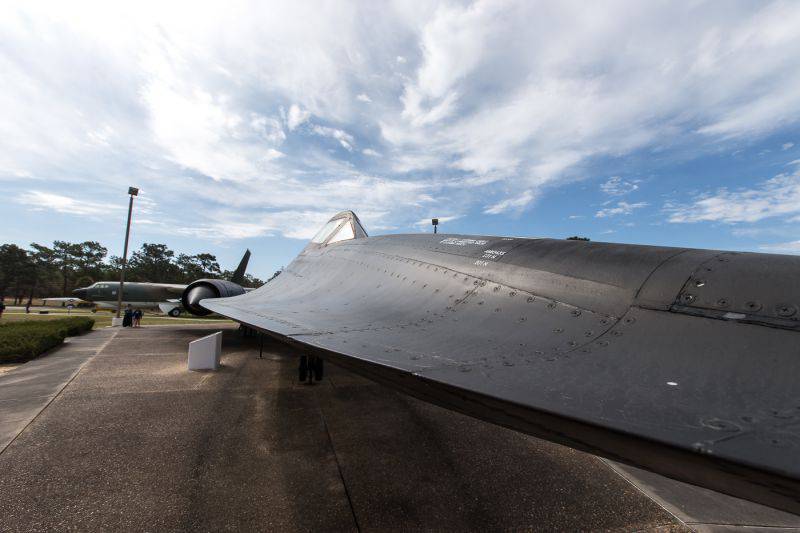
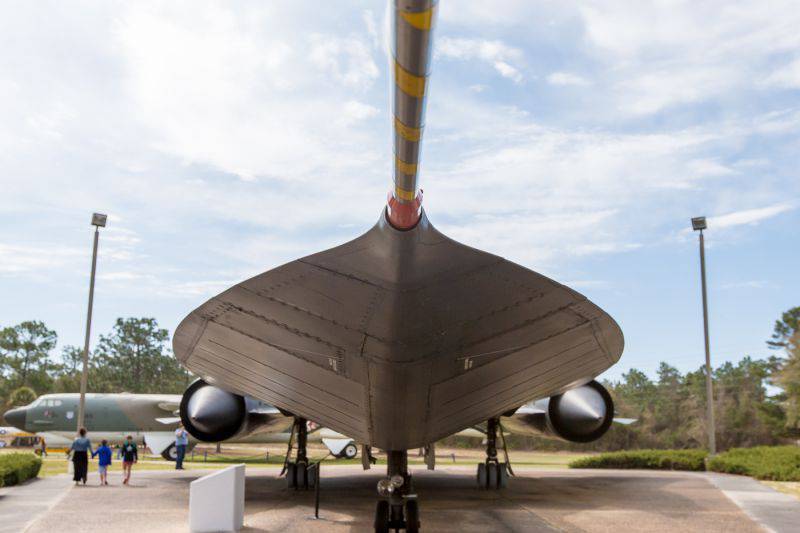
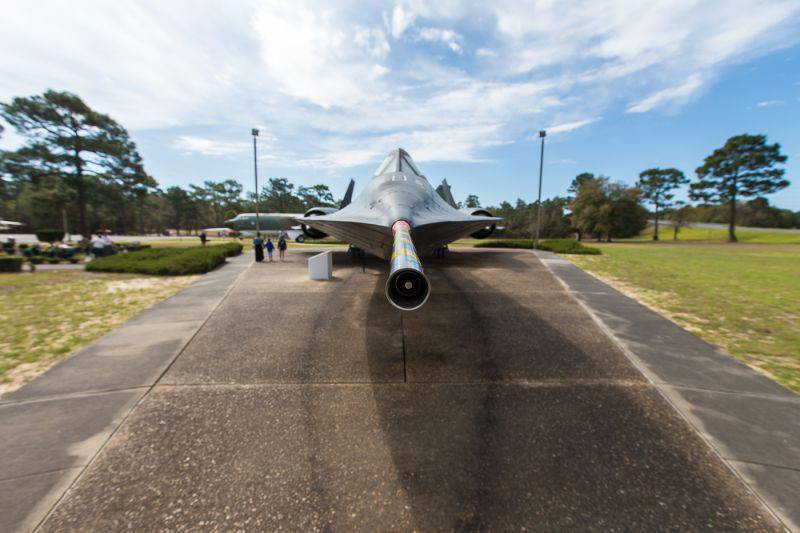
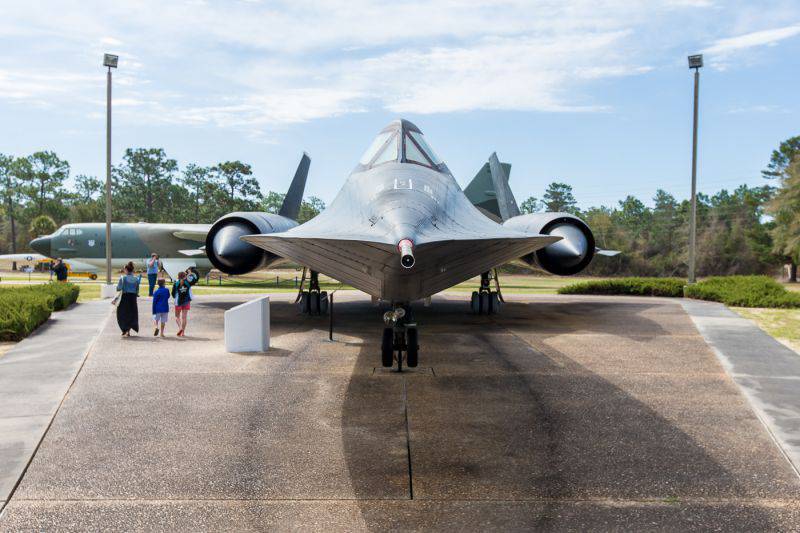
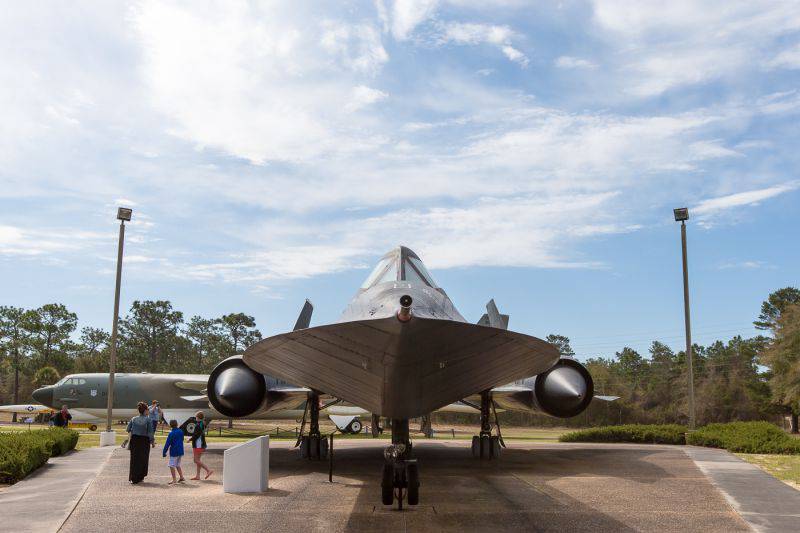
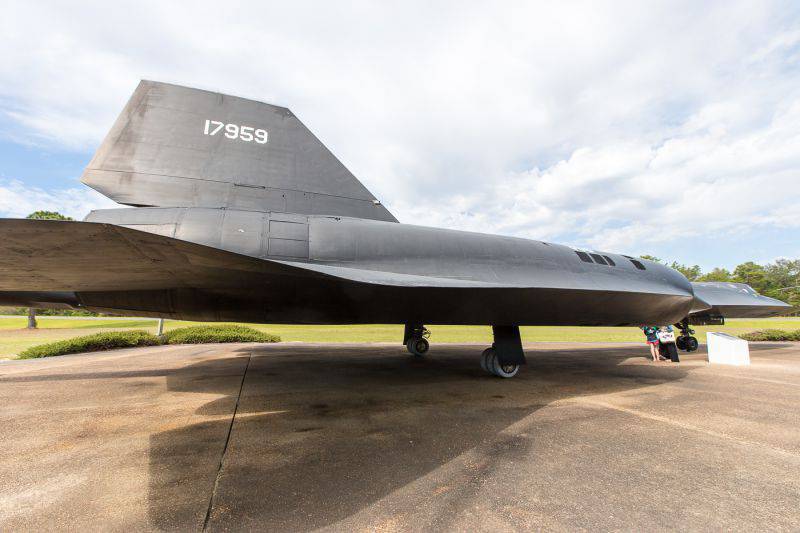
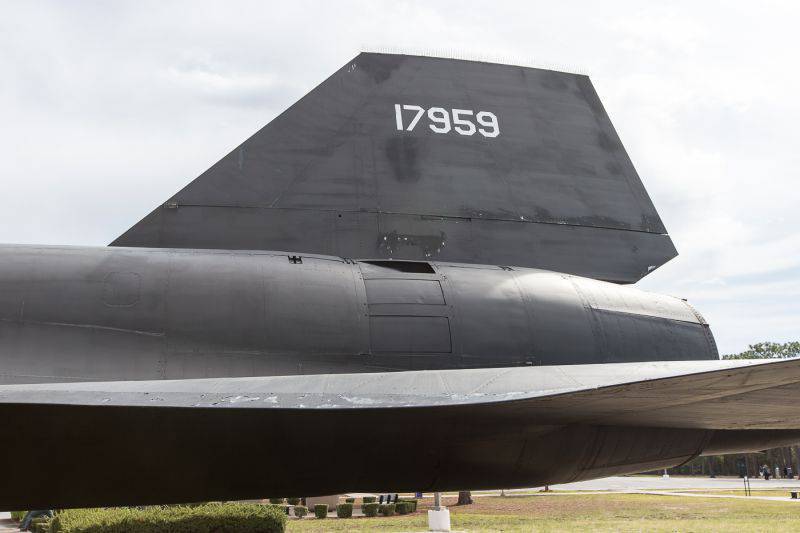
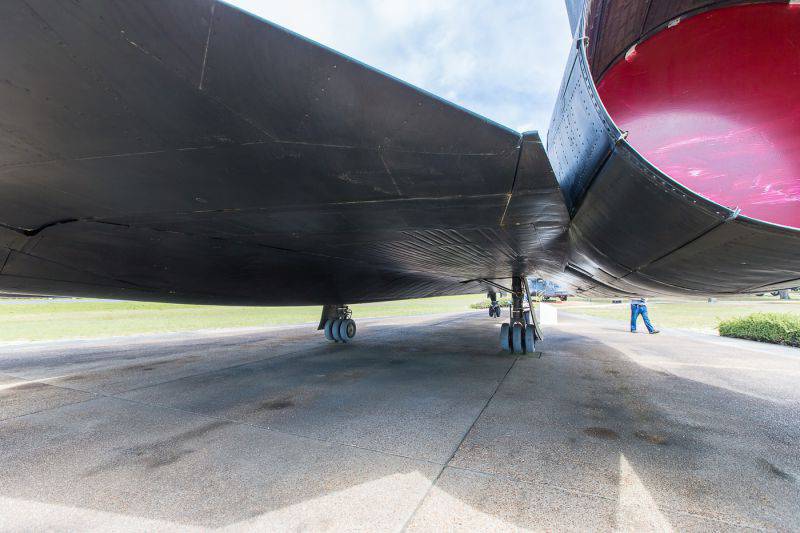
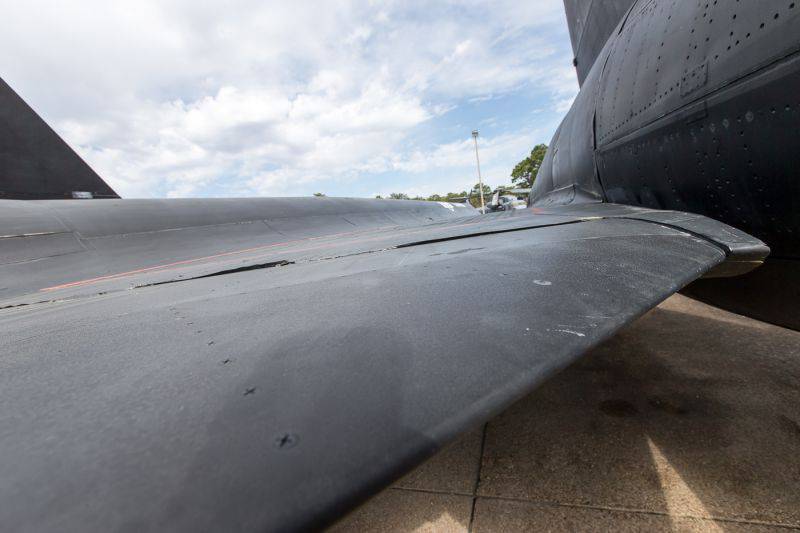
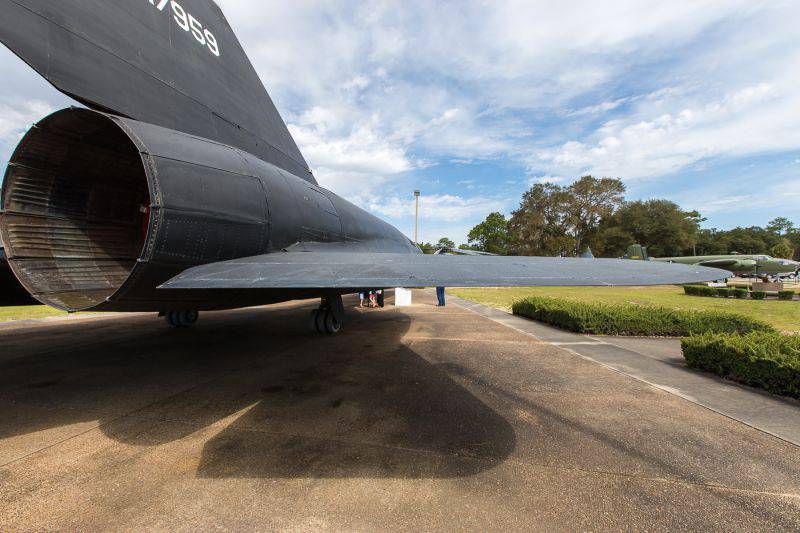
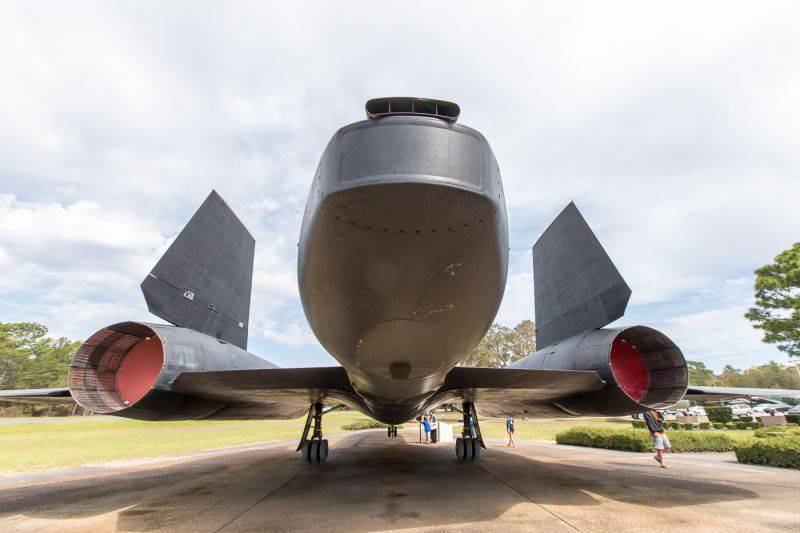
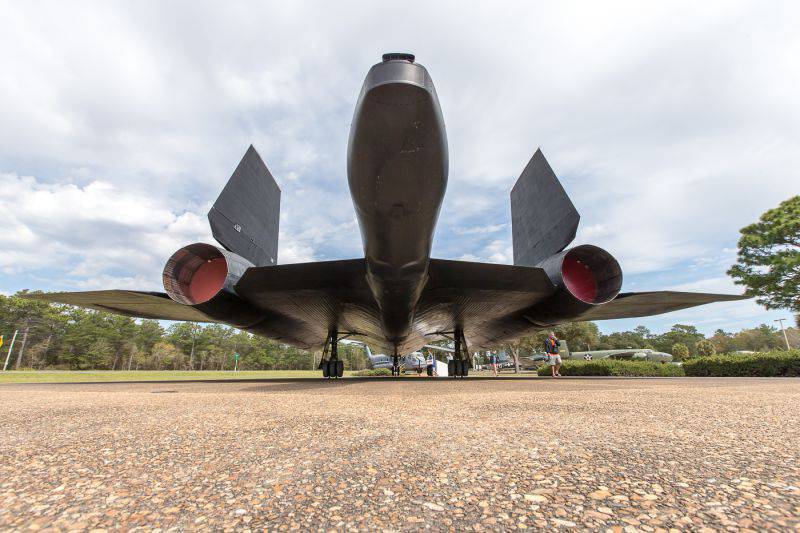
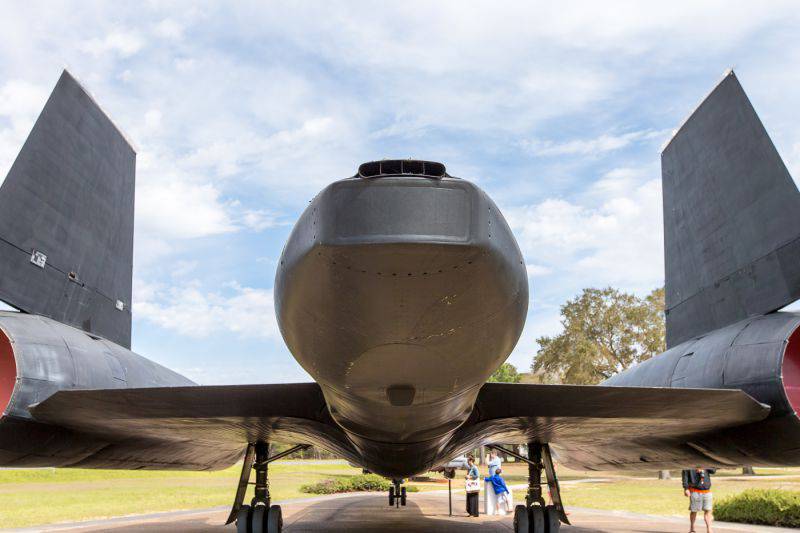
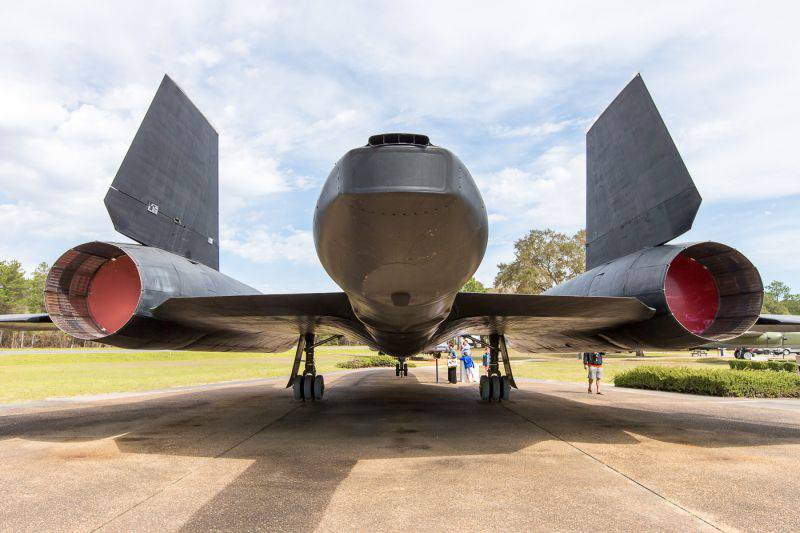
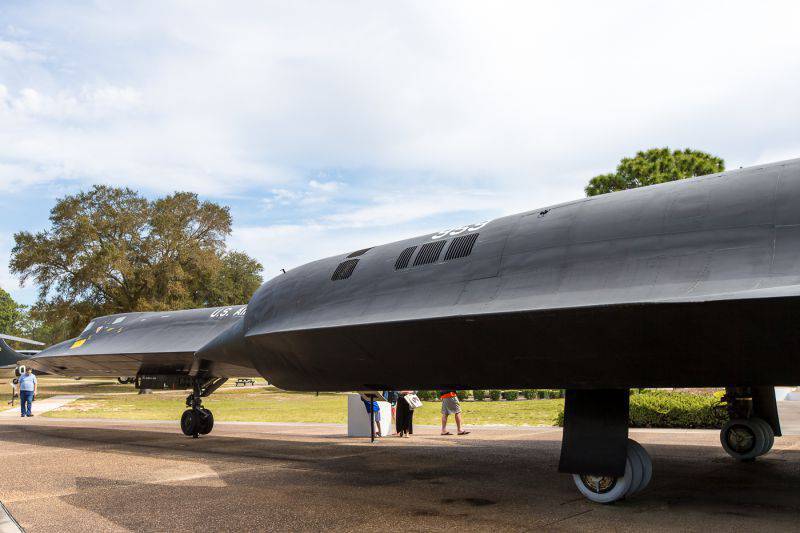
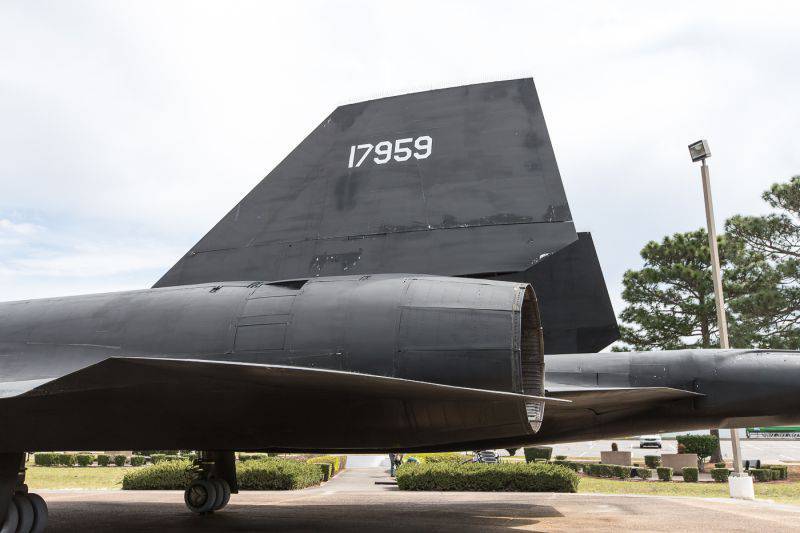
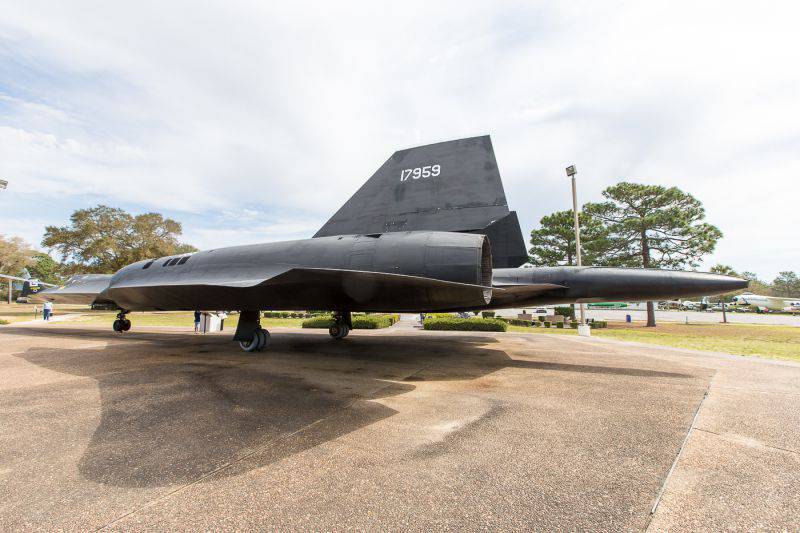
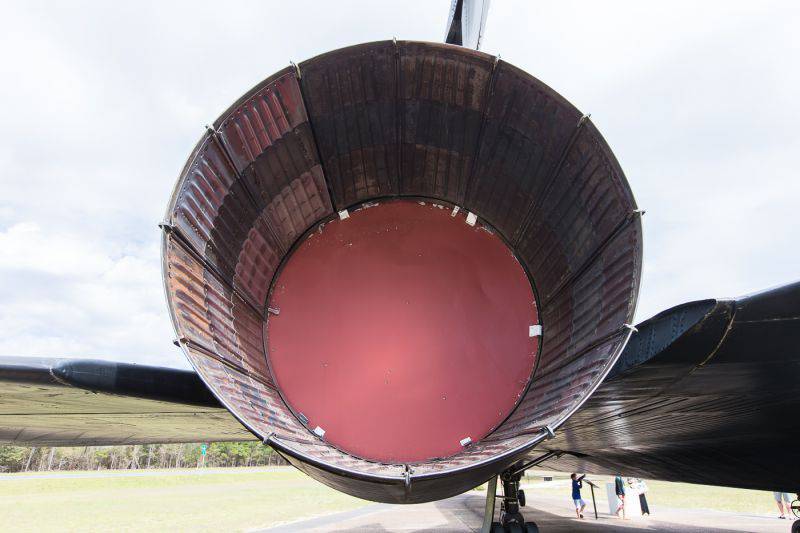
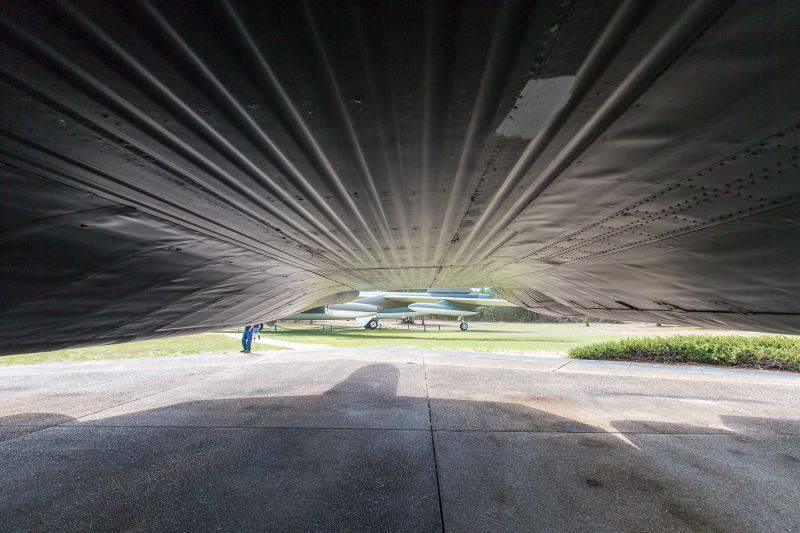
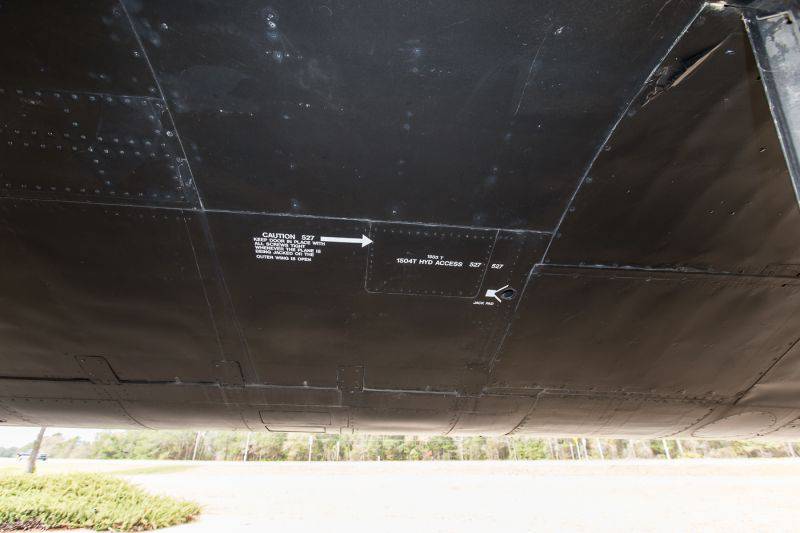
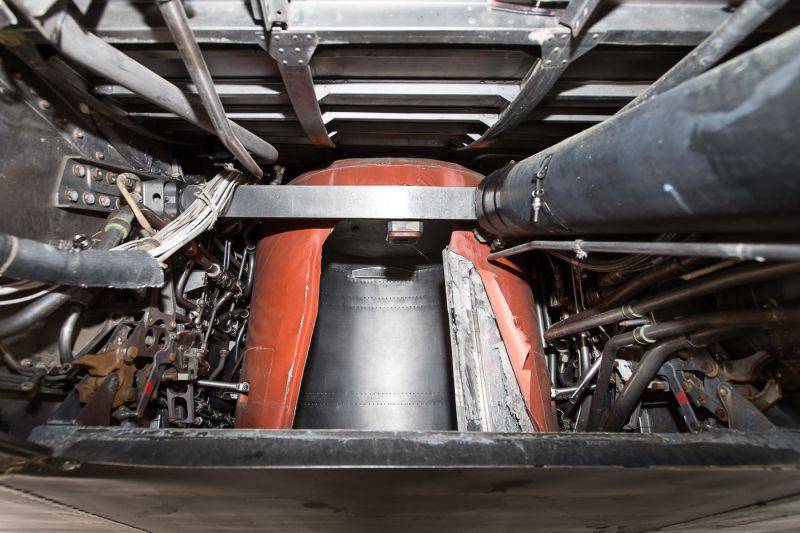
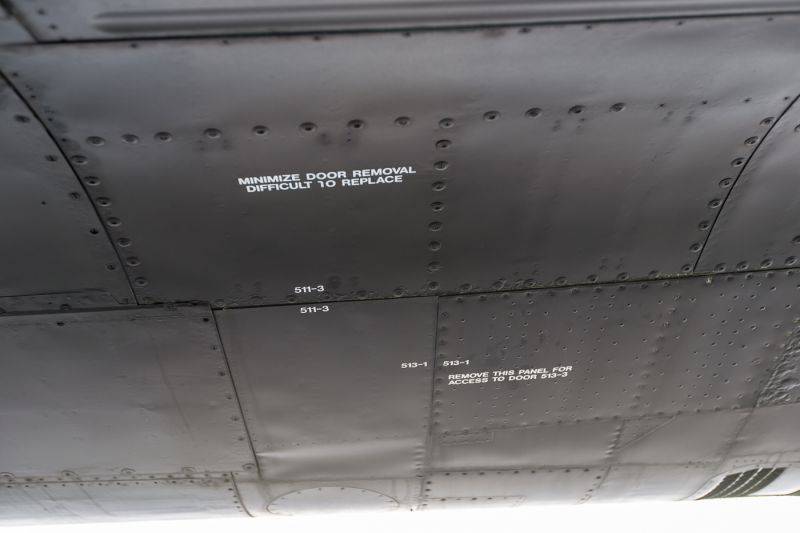
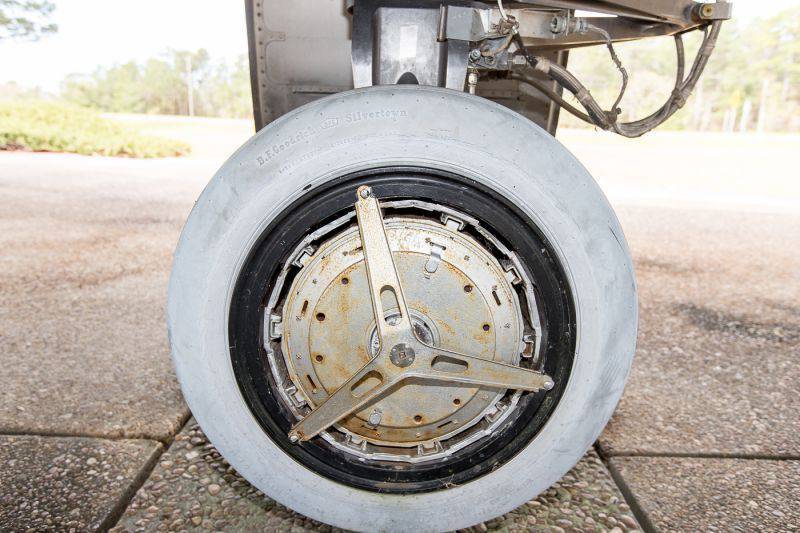
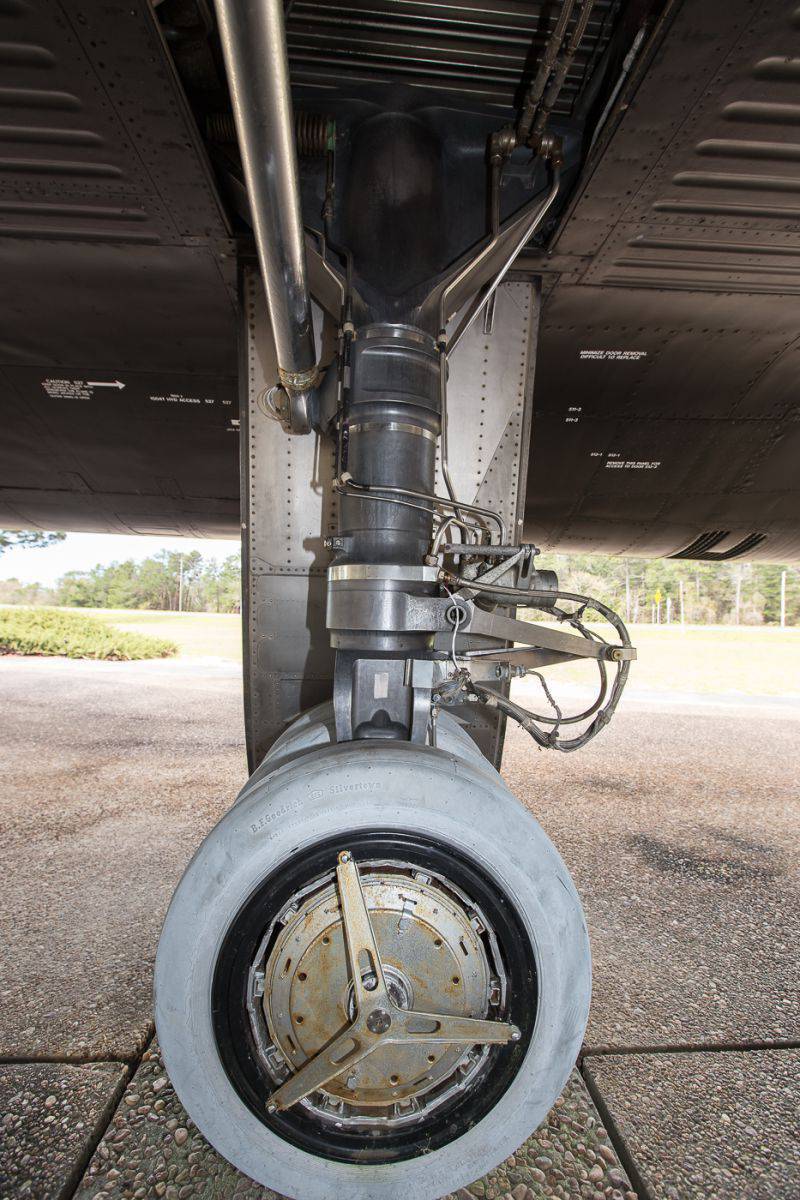
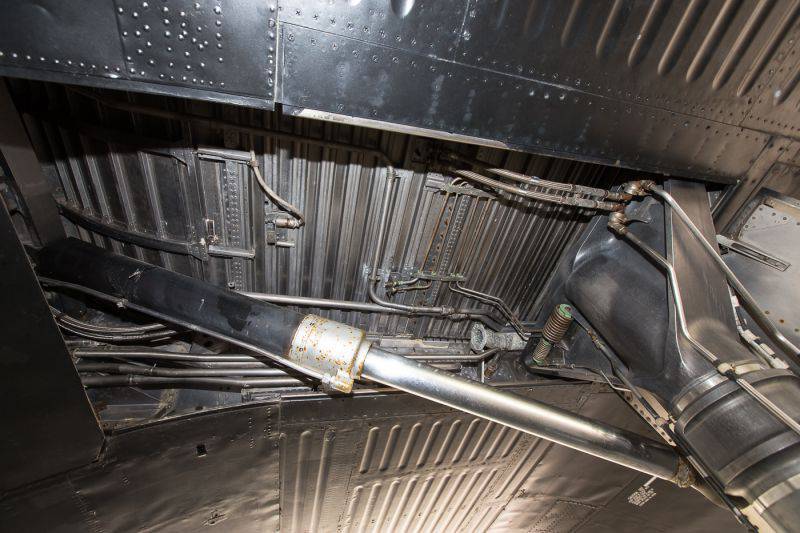
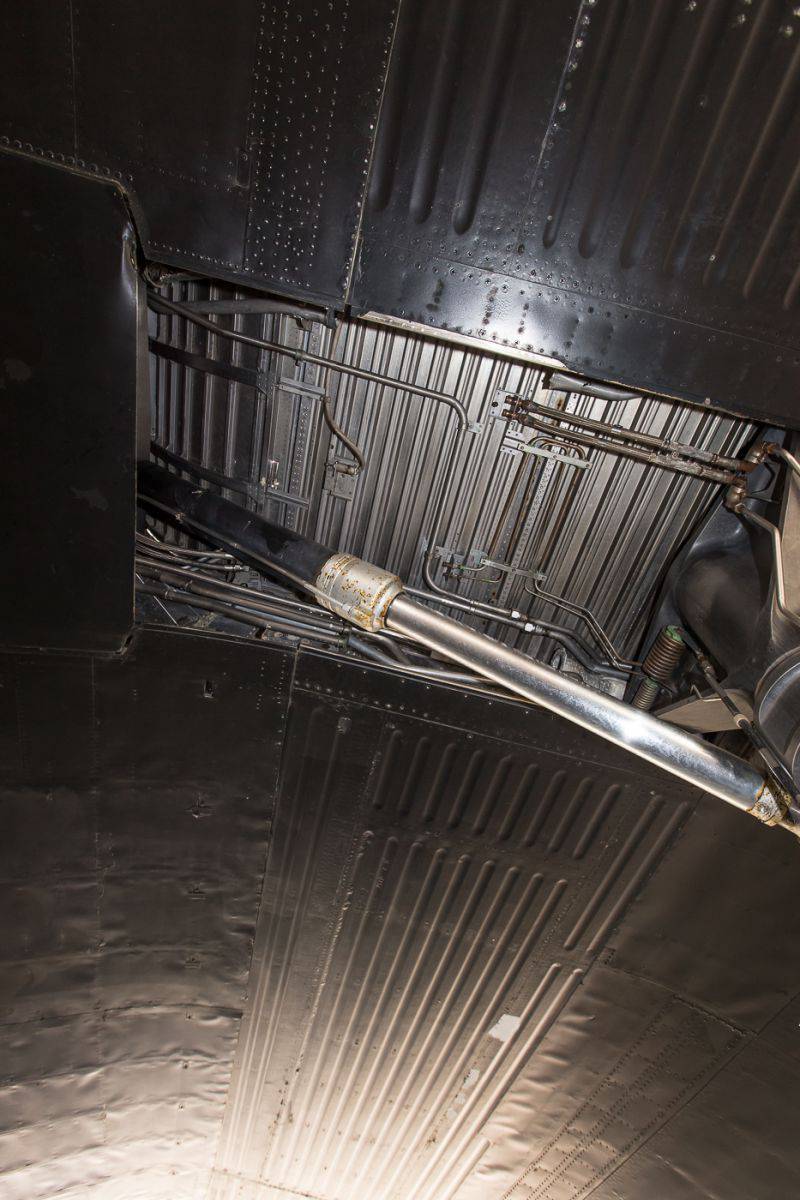
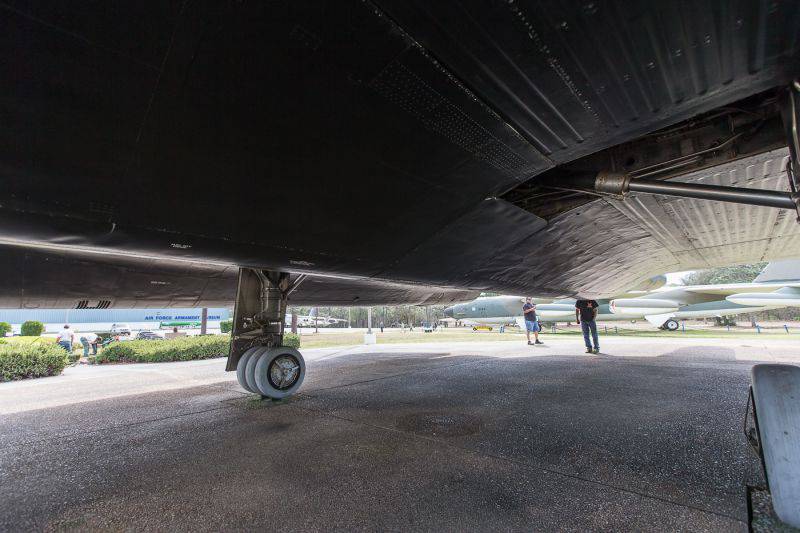
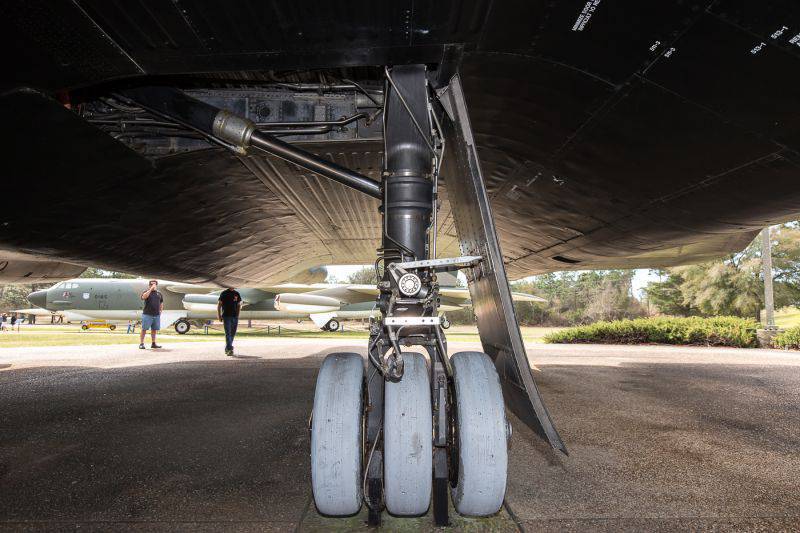
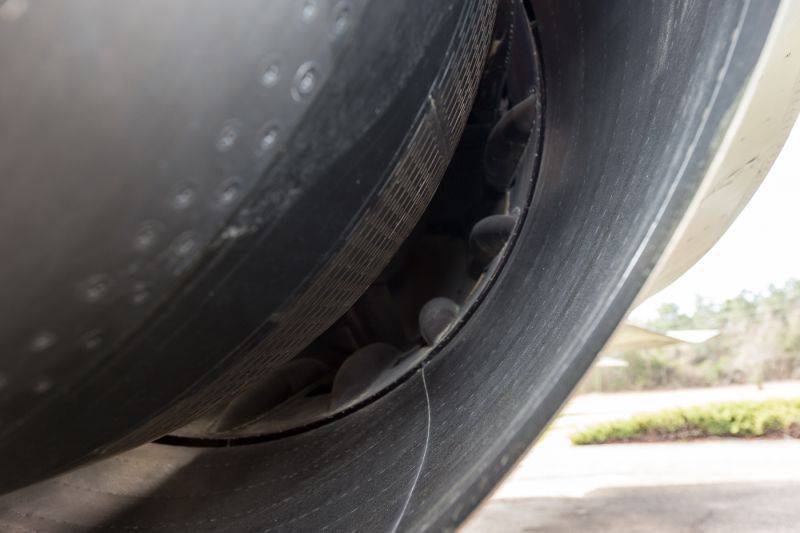
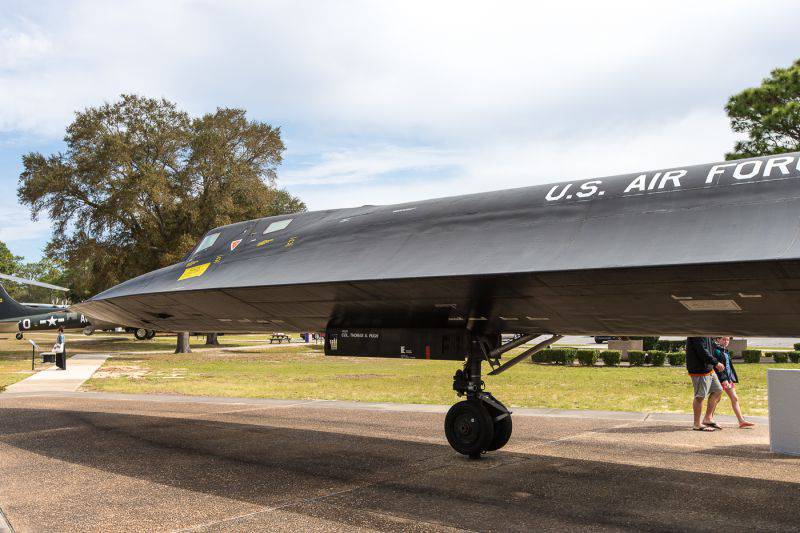
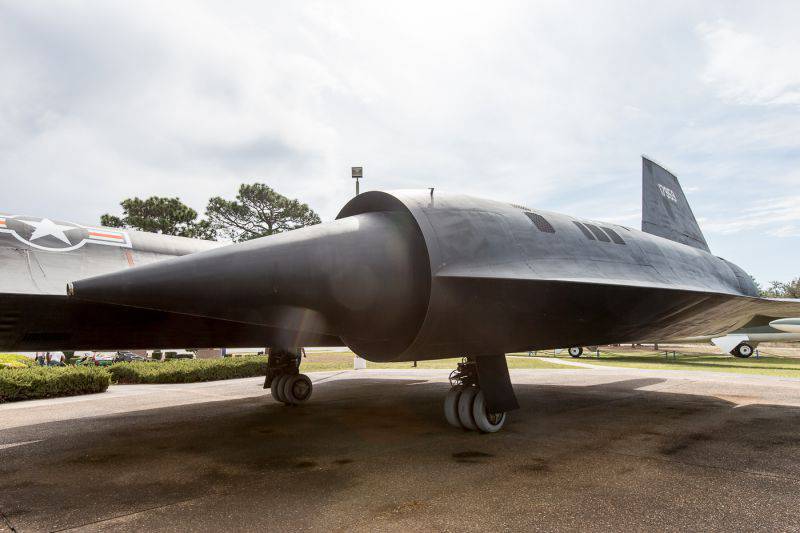
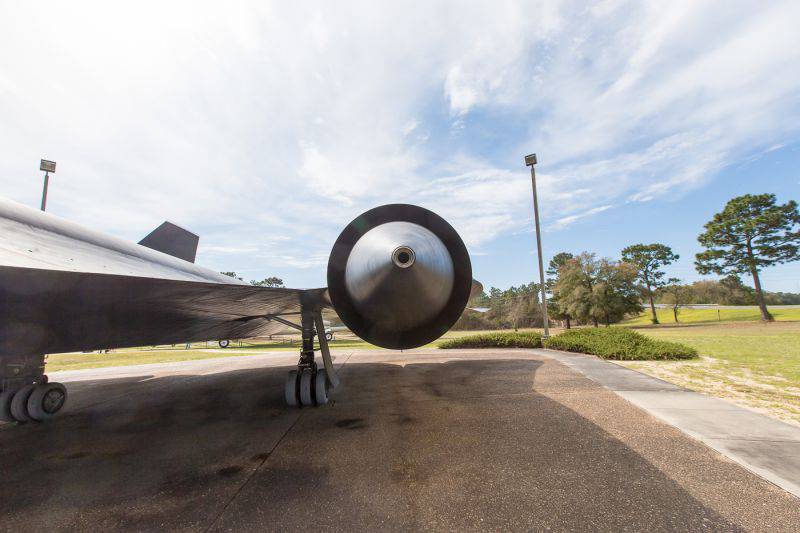
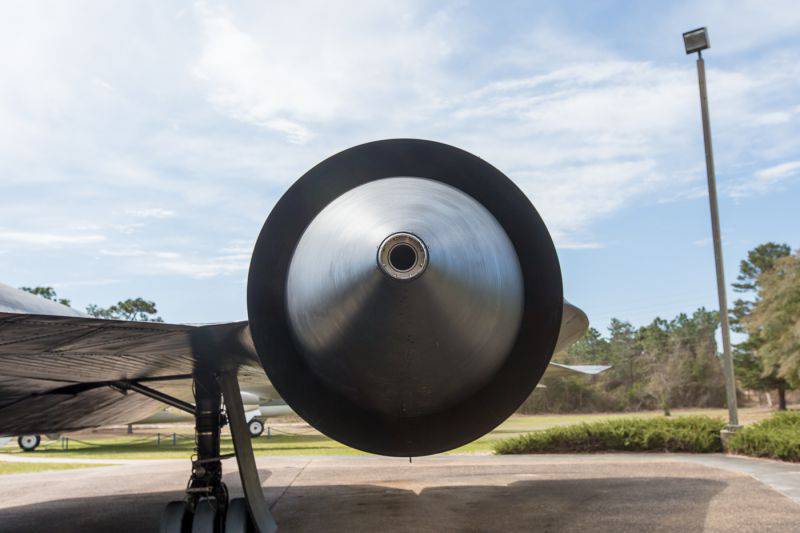
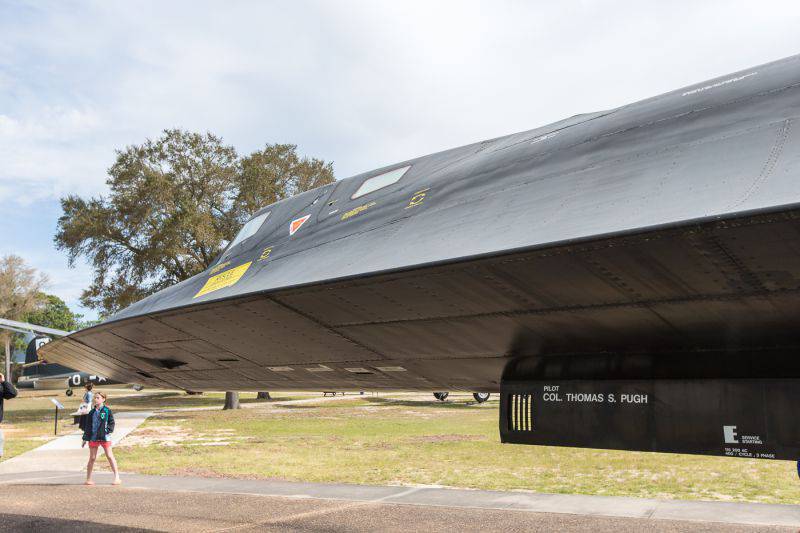
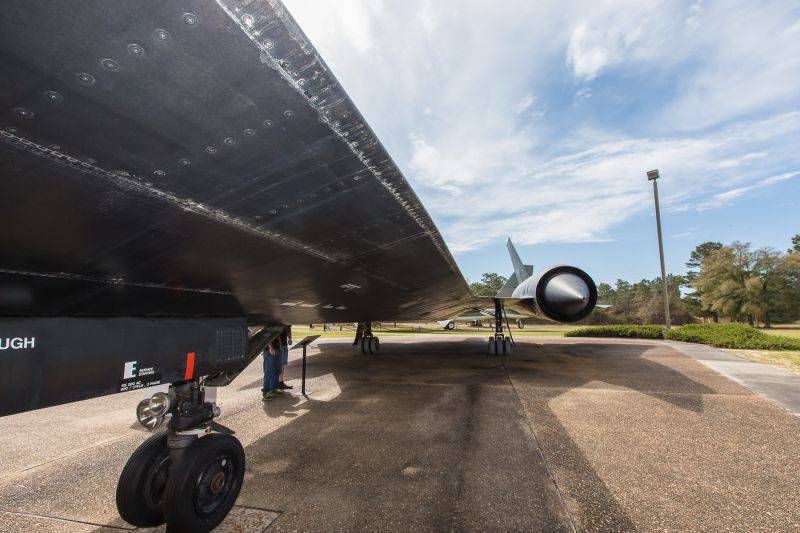
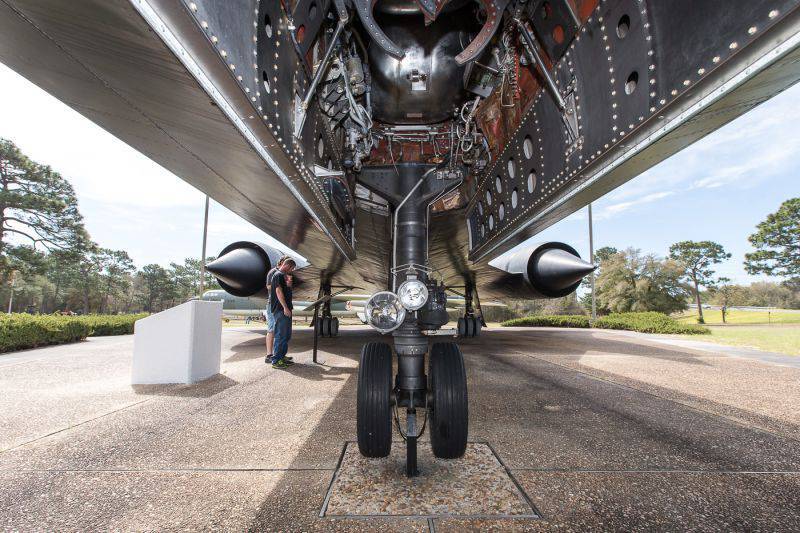
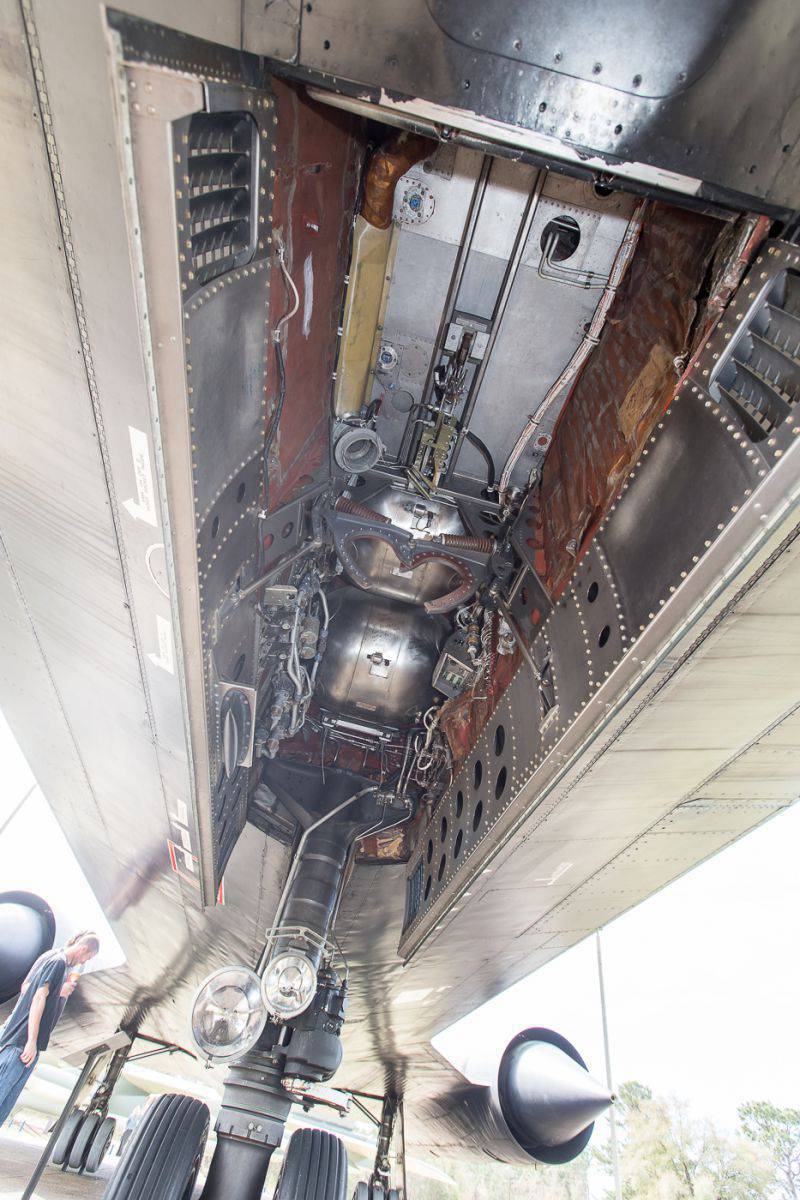
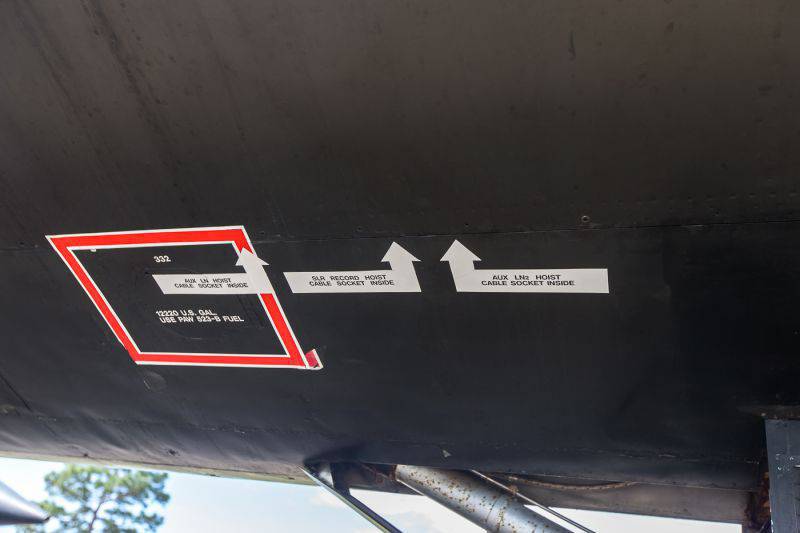
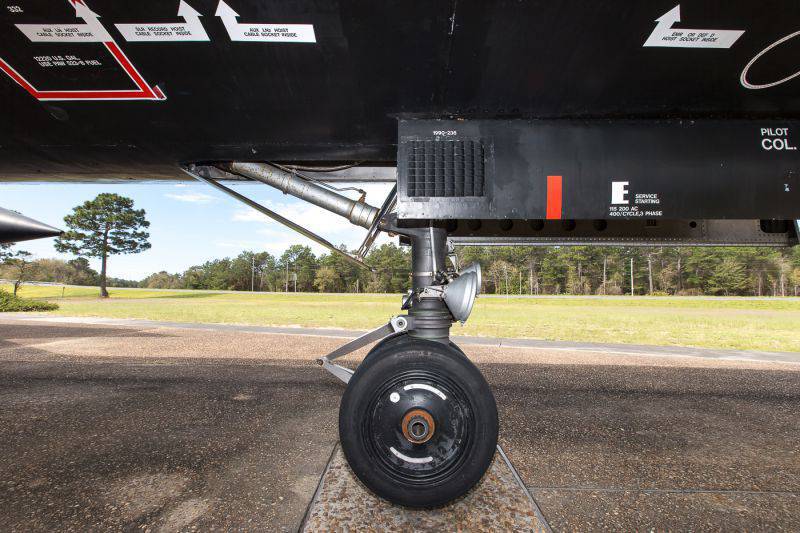
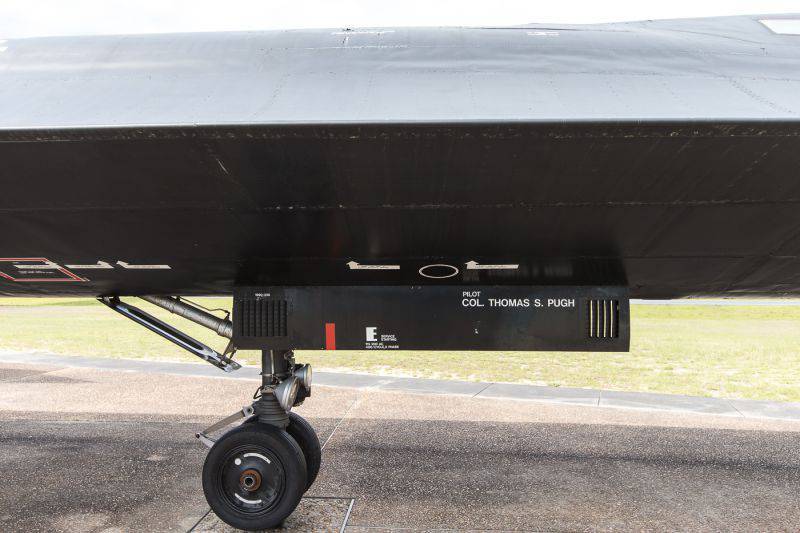
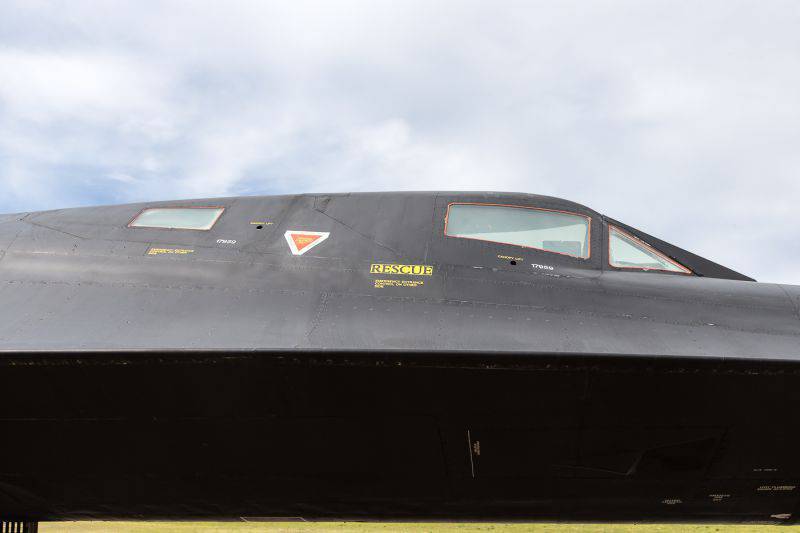
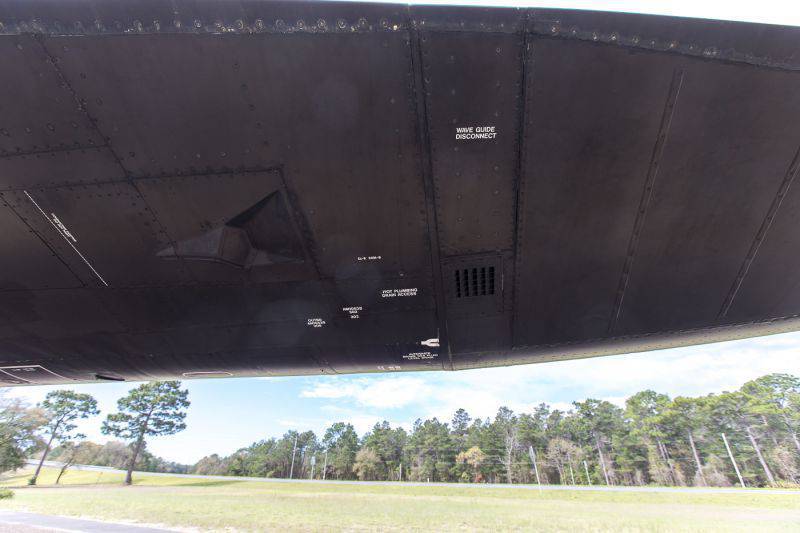
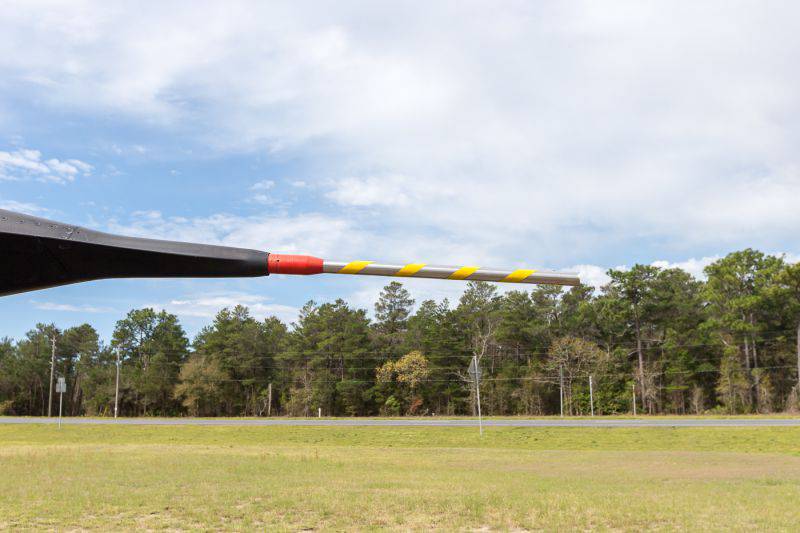
Information